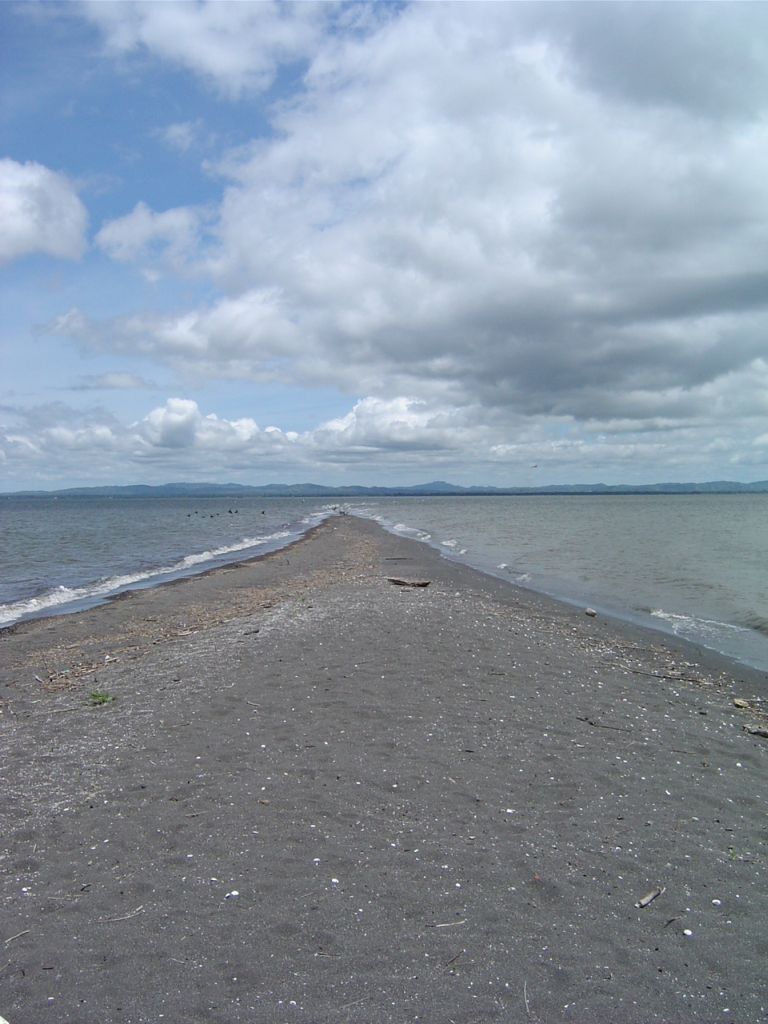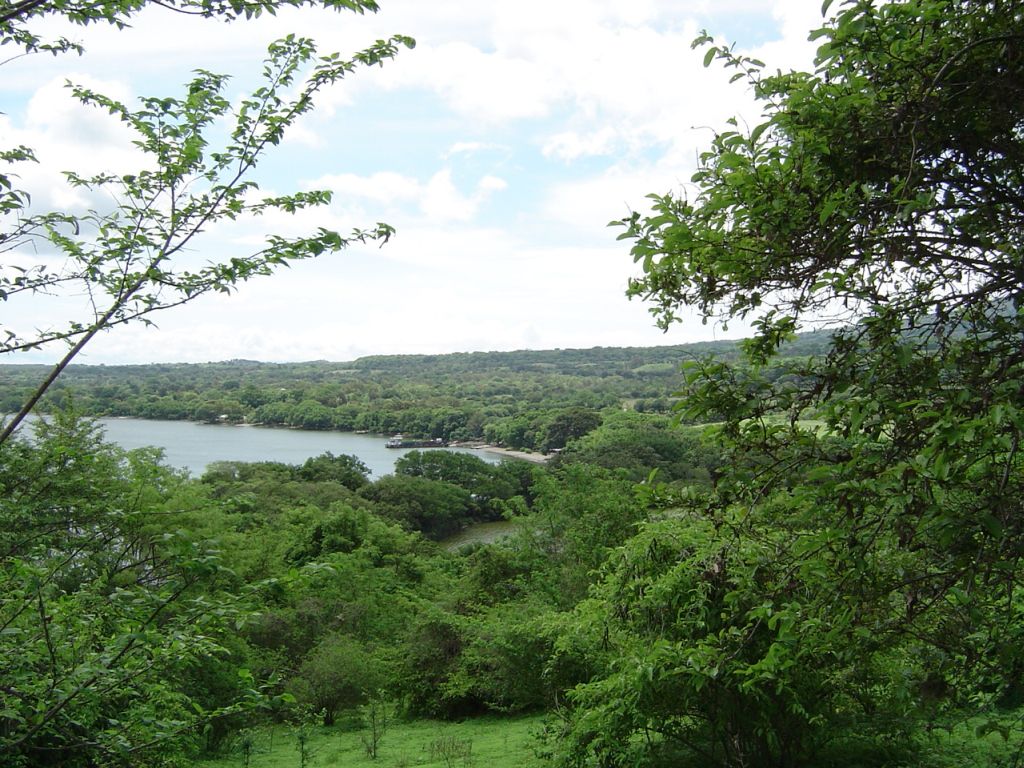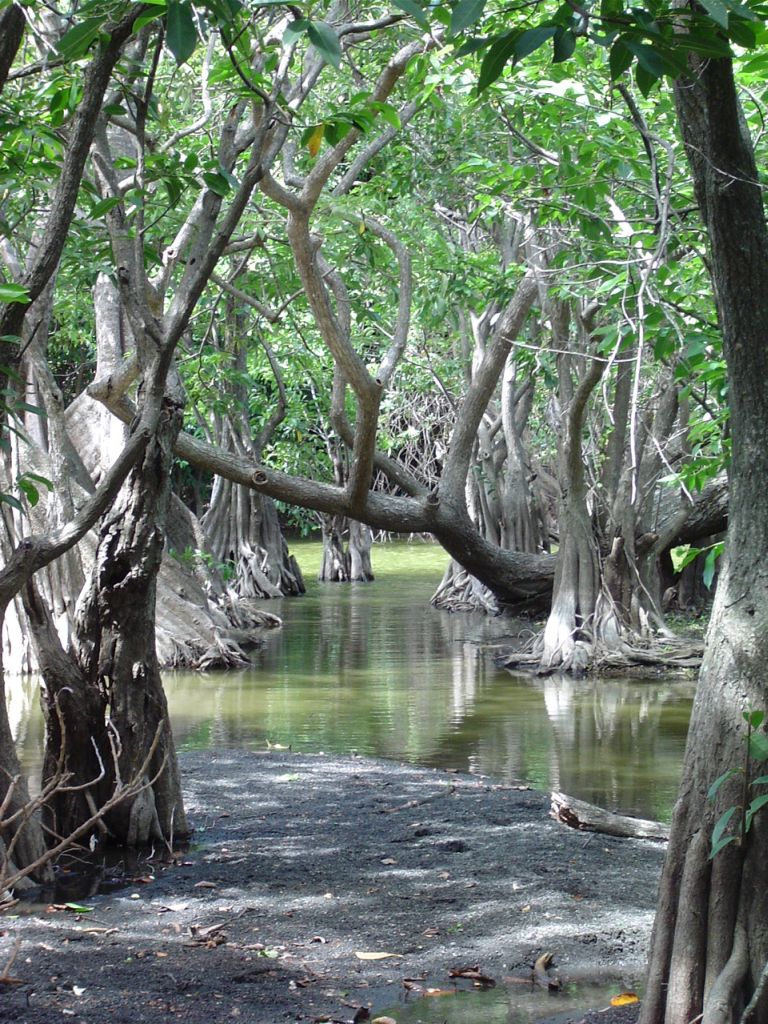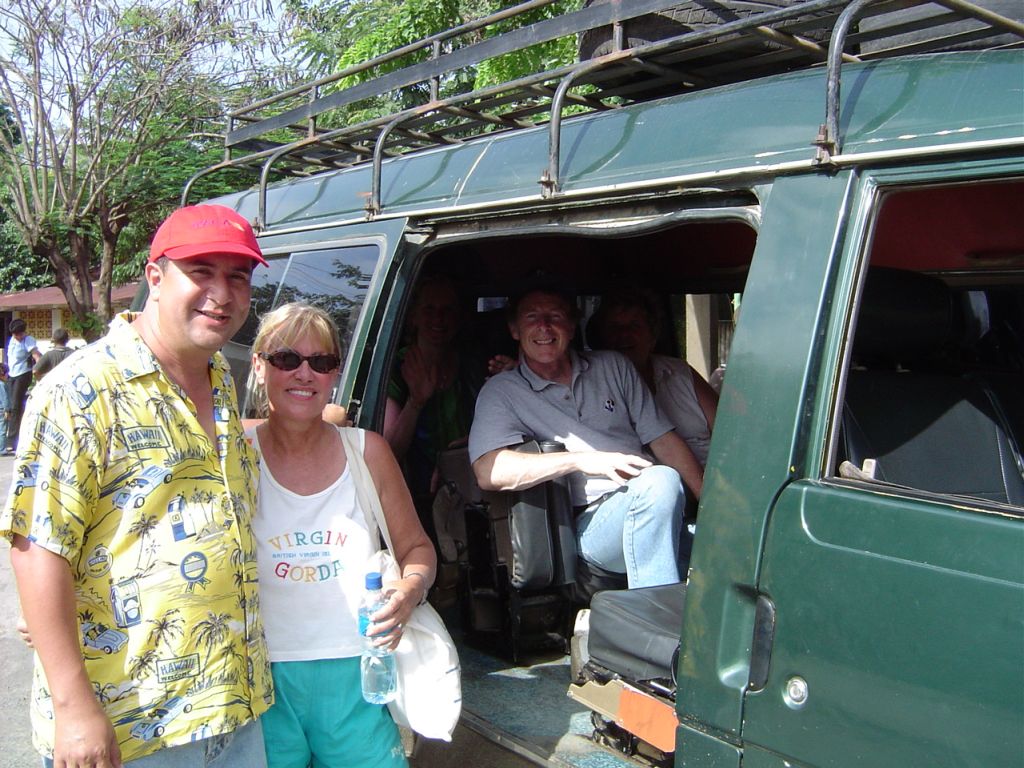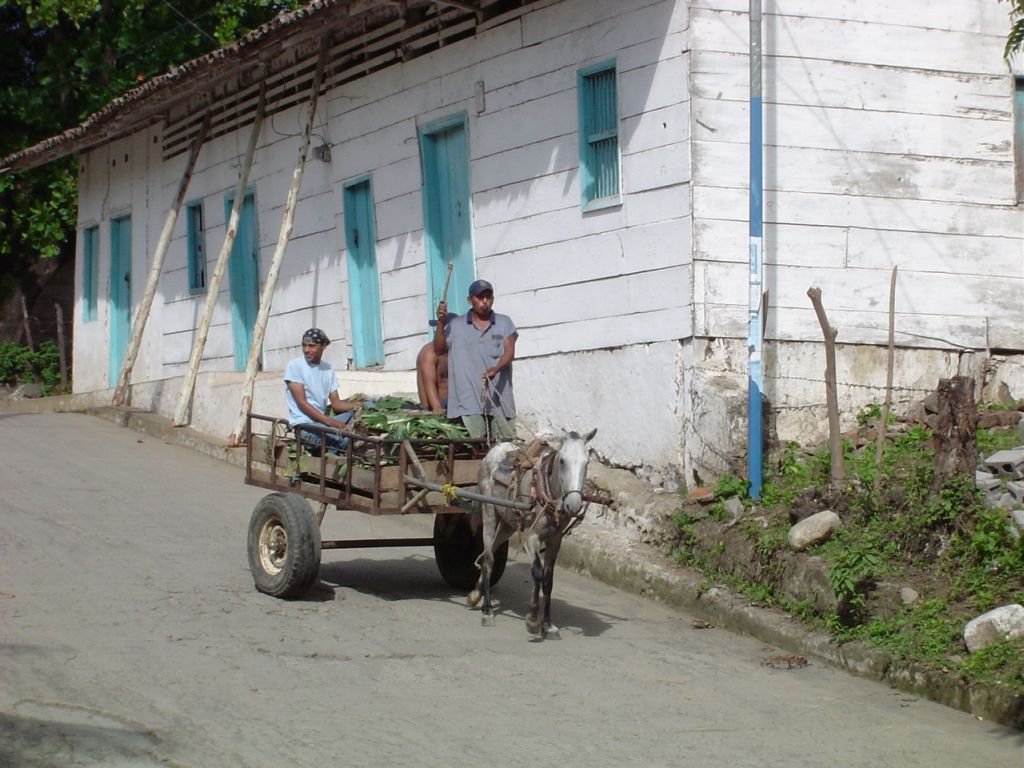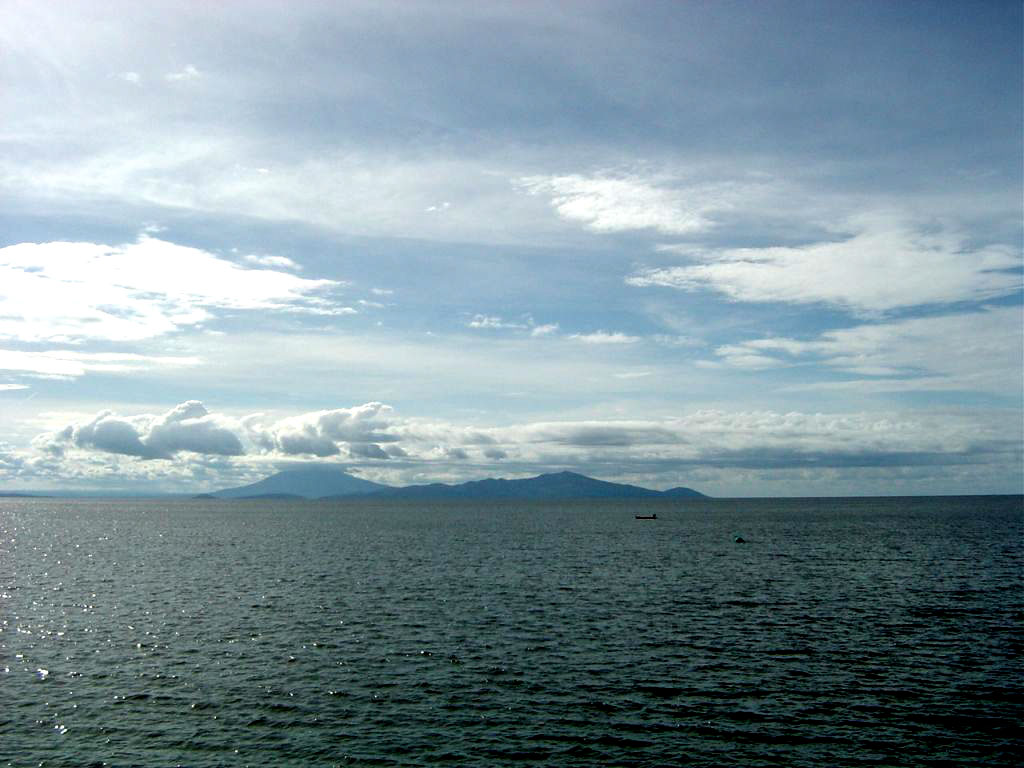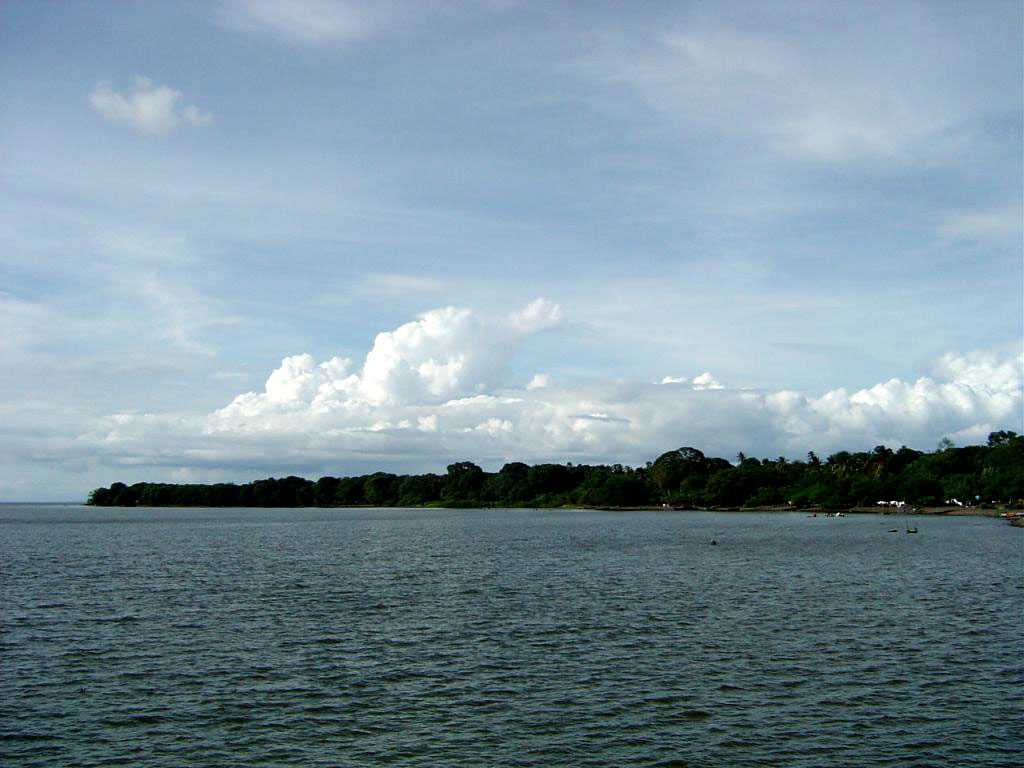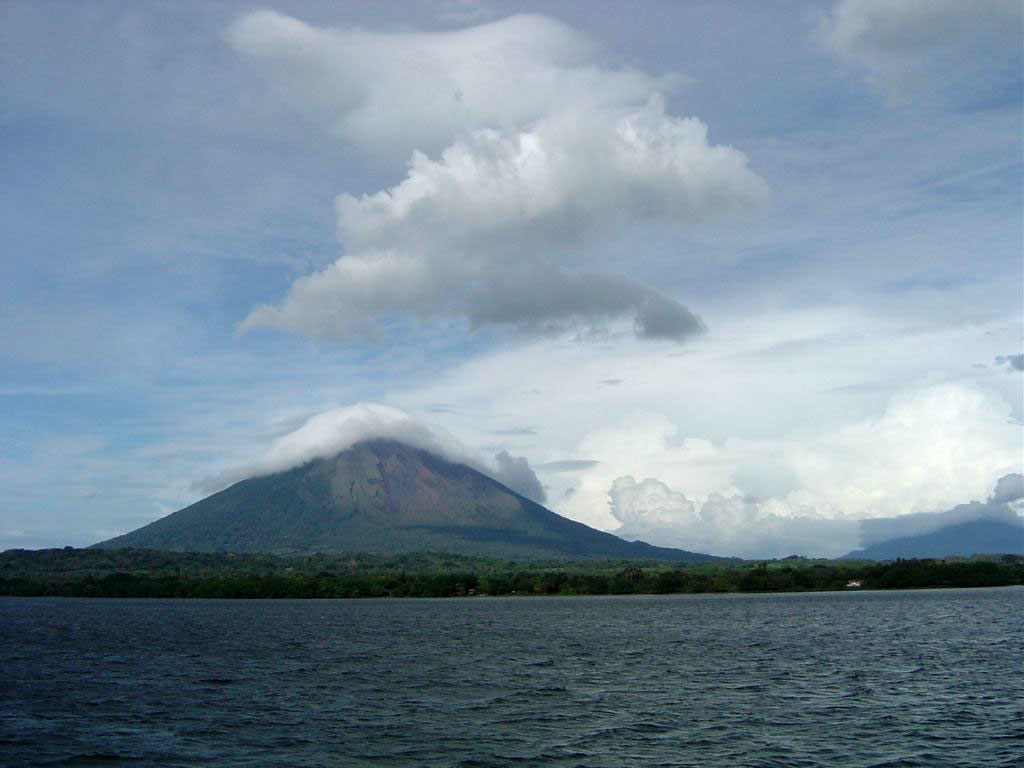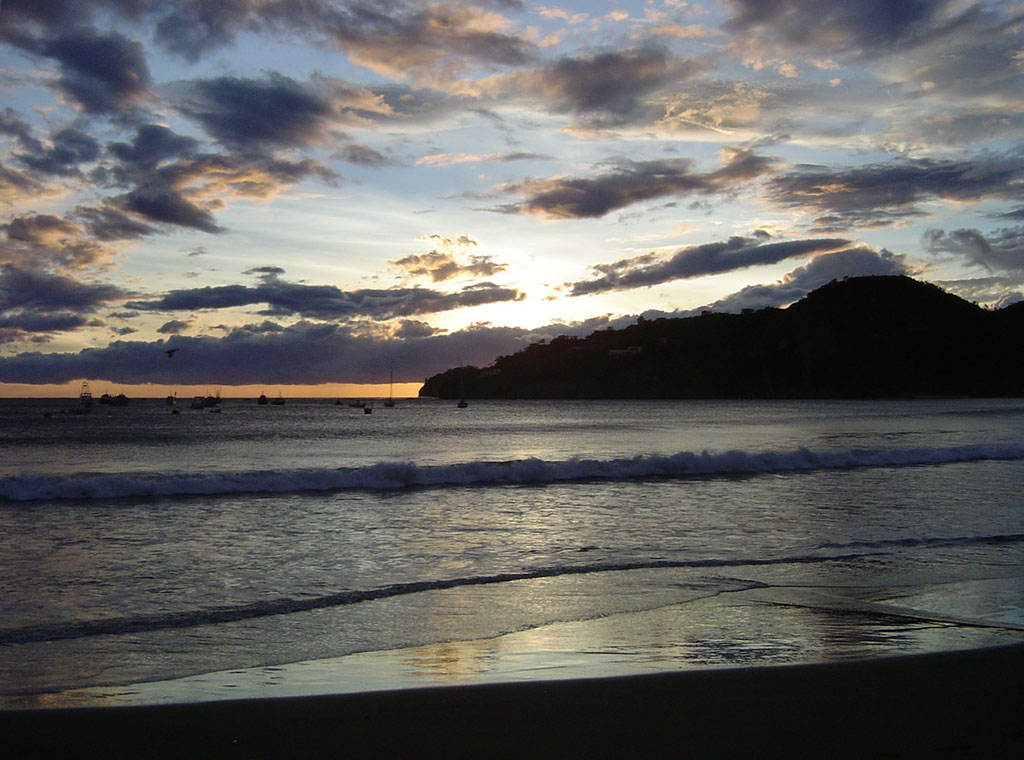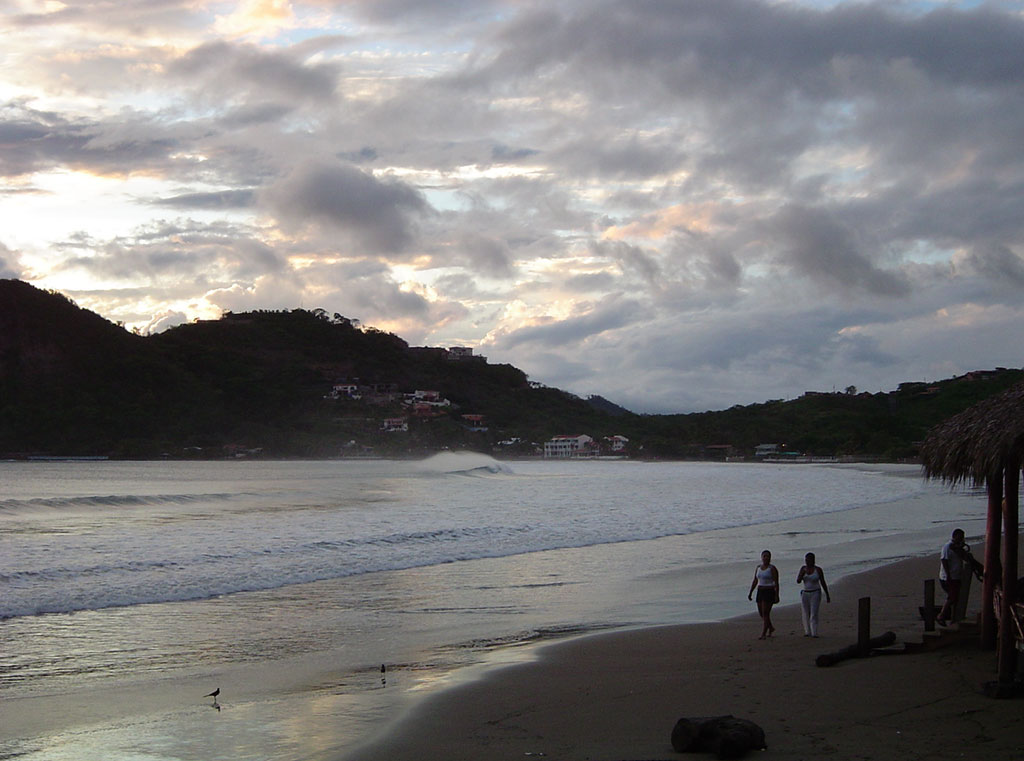Honduras and Nicaragua
May and June, 2004
May 30th
Having decided to abandon El Salvador to the natives, we headed for the Honduran border via the shortest route. The road was straight and clear of trucks when the right-rear tire, now twice repaired, blew out. All of the steel belts in the tread gave out at the same time. This unscheduled pit stop took only 25 minutes, but the yellow flag was up for the second time, until a new spare could be obtained.
The border crossing from El Salvador to Honduras showed us new ways the "tramitadores" (border agent assistants) can separate you from your money. To make a long story short, don't hand over the car papers any more easily than you would your passport. We asked for trouble by having lunch while he "worked" on our behalf, not following the guy around. The penalty wasn't severe, maybe $20 more than the $40 it should have been.
Hoping to avoid the travails of another big city for a day or two, I headed for Coyolita, gateway to Isla El Tigre, where the guidebook promised uncompromised vistas in a charming rural atmosphere. The road ends at the waters edge; the city there is no more than a few restaurants and a dock. No one could convince us that we were being quoted a reasonable fare to the island, only a kilometer away, unless, of course, $50 dollars sounds reasonable for a five minute boat-ride. Nobody would budge on the price, informing us that the tariff was what it was and couldn't be negotiated. We walked away, thinking they would reconsider, but they didn't.
Realizing that we couldn't spend the night on an island with our car parked on the city dock, we drove a few blocks back up the road to a home offering overnight parking within a fenced lot. Two little girls, ten and eleven years old, came to our rescue. Not only could they provide a place for the car, they knew a boy who would get us to the island for $5.00. Back to the dock we went, with the girls acting as tour guides, rolling our small suitcase down the road in front of us. I'm sure the boat operators who refused to negotiate wondered what we were up to as we climbed into a boat and headed for Amapala, the only city on the island.
We shared a taxi with some college girls, in this case the back of a Datsun pick-up truck, and proceeded to the Hotel Villa Playa Negra, circling part of an extinct volcano during the twenty minute drive. The hotel had a splendid view of the Gulf of Fonseca; we could see El Salvador off to the right and Nicaragua off to the left. I went for a swim on the deserted beach in front of the hotel before dinner in the hotel restaurant overlooking the water.
The glamor began to fade when Elsa developed a case of "Maya's Revenge" from something she ate, made worse by looking into the swimming pool on the way back to our room. The caretaker was cleaning it for no apparent reason; one could see only a few inches into the green water. By the time we returned to our room, the lights had come on and thousands of bugs had gathered to party with their brethren before dieing in piles under the lamps. The shower, having the dreaded single cold-only valve, added a new wrinkle by including an electrical outlet above the shower head so those harboring a nascent death wish could dry their hair while standing in ankle-deep water.
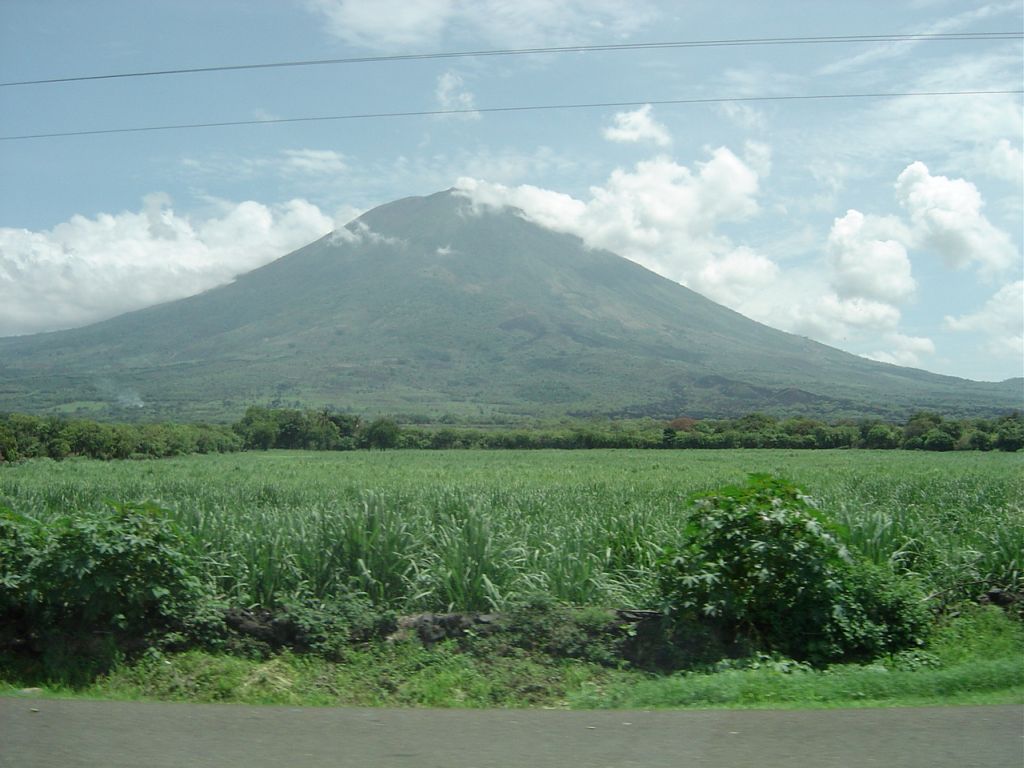
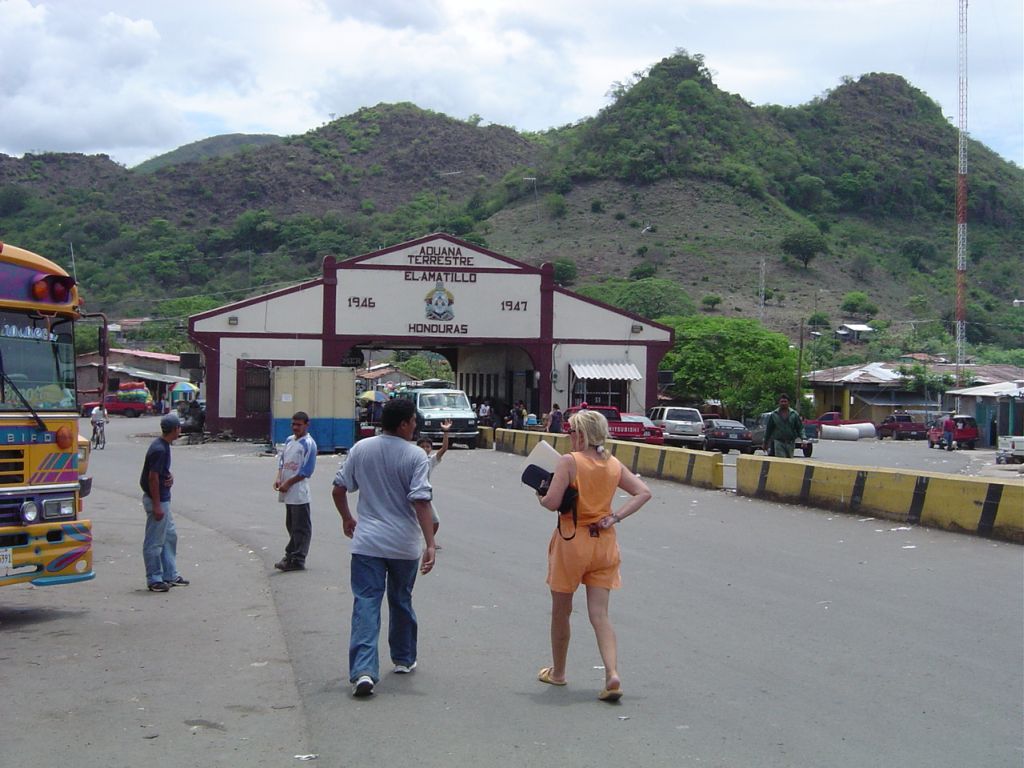
Leaving El Salvador, entering Honduras
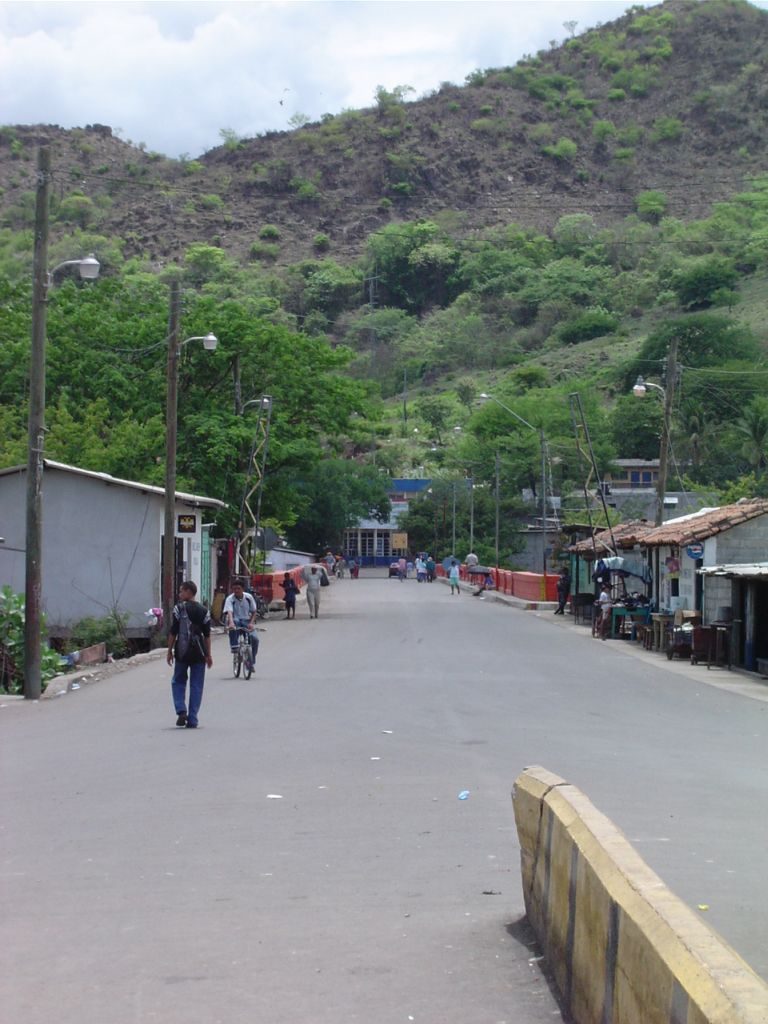
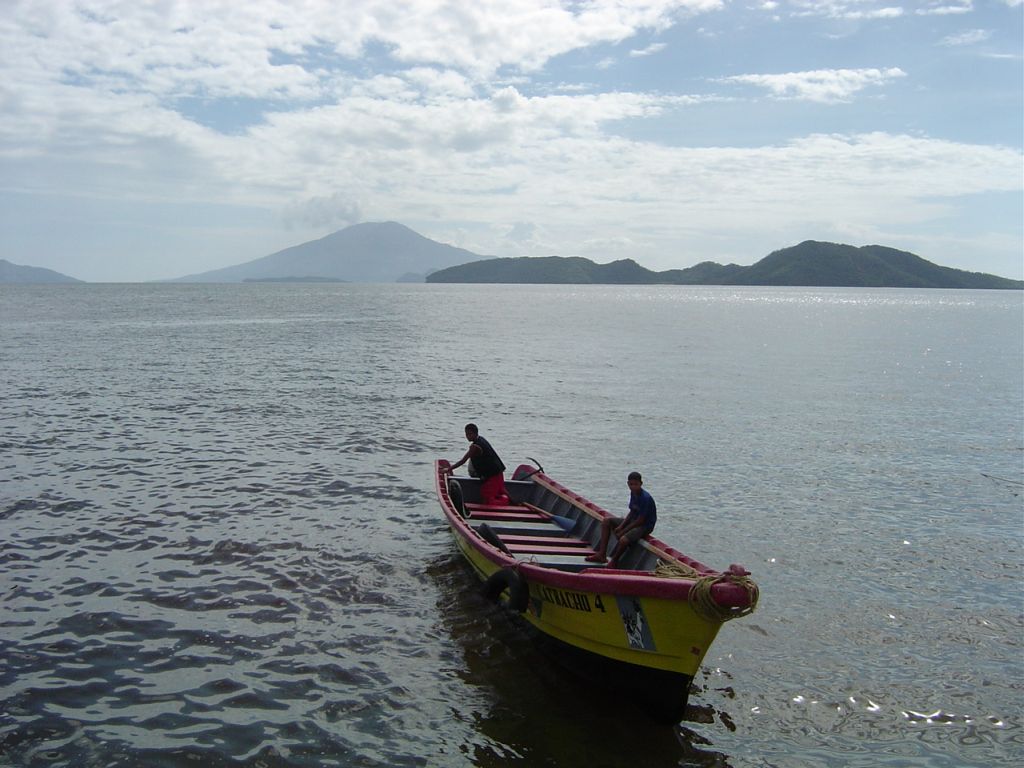
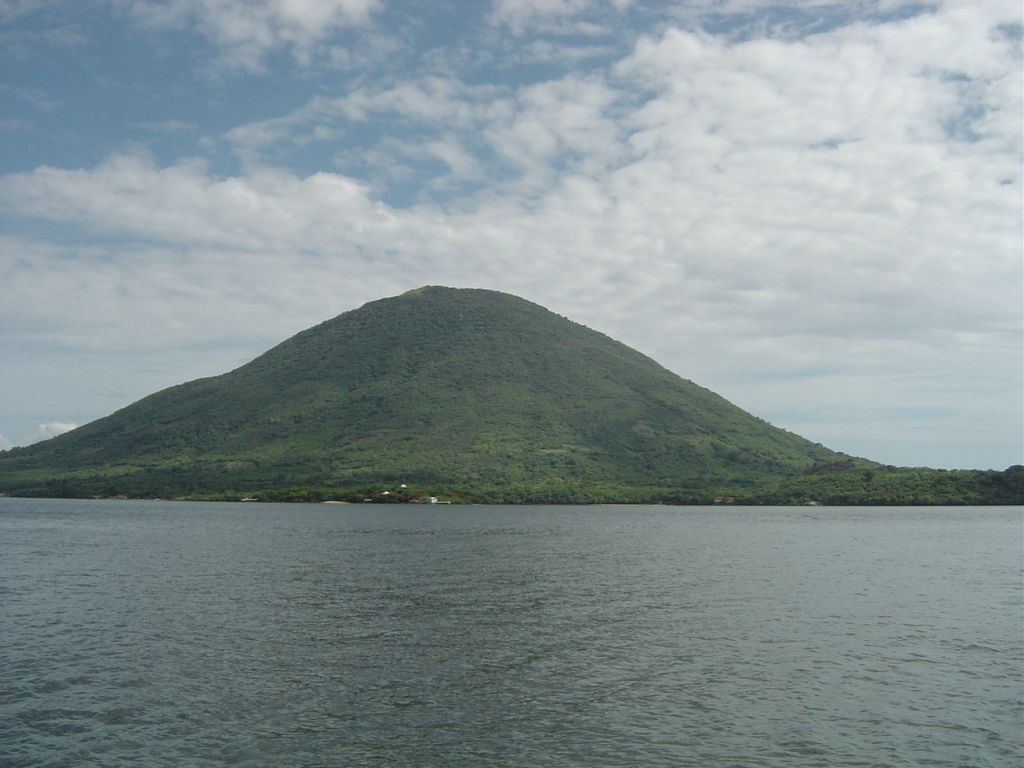
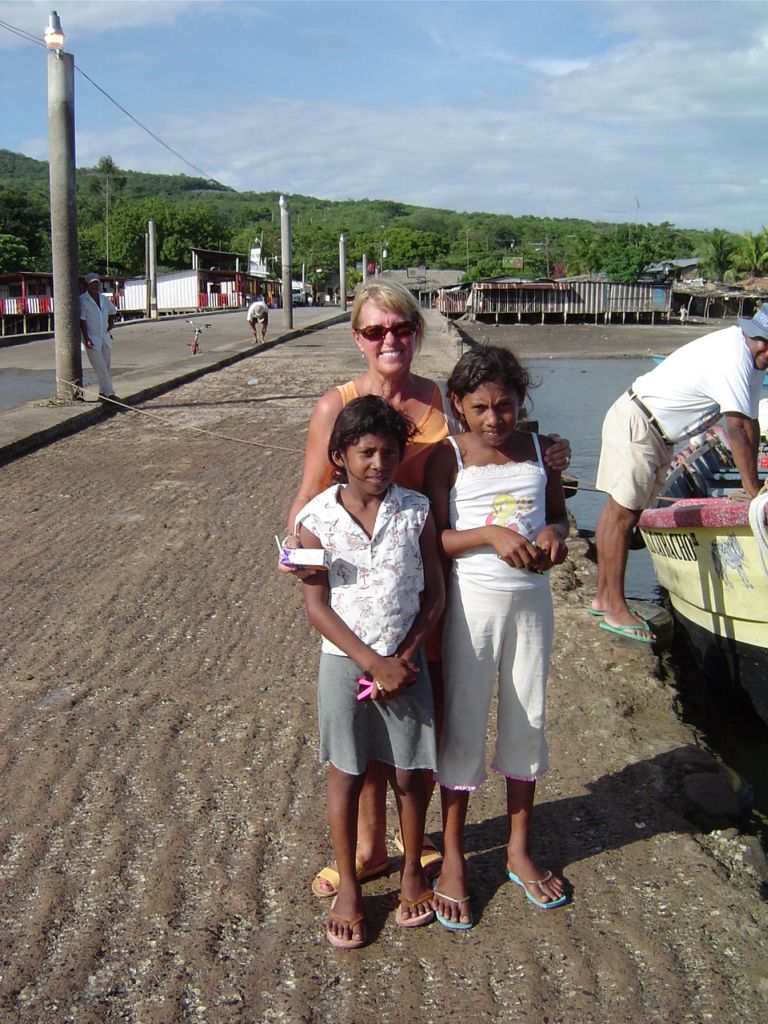
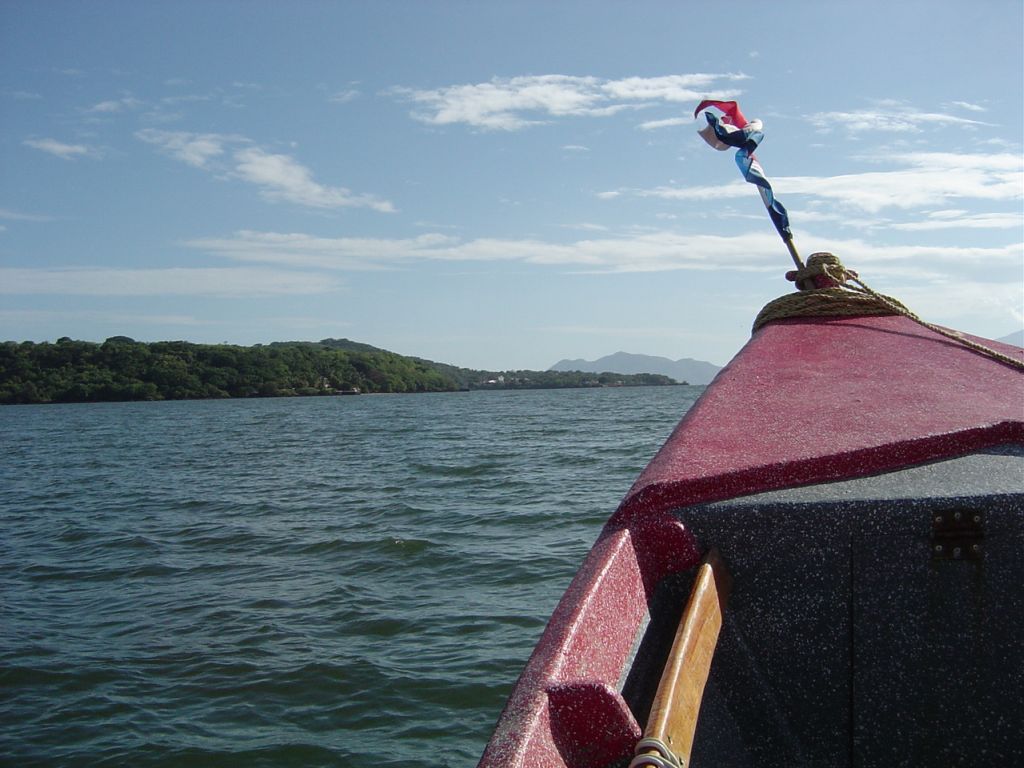
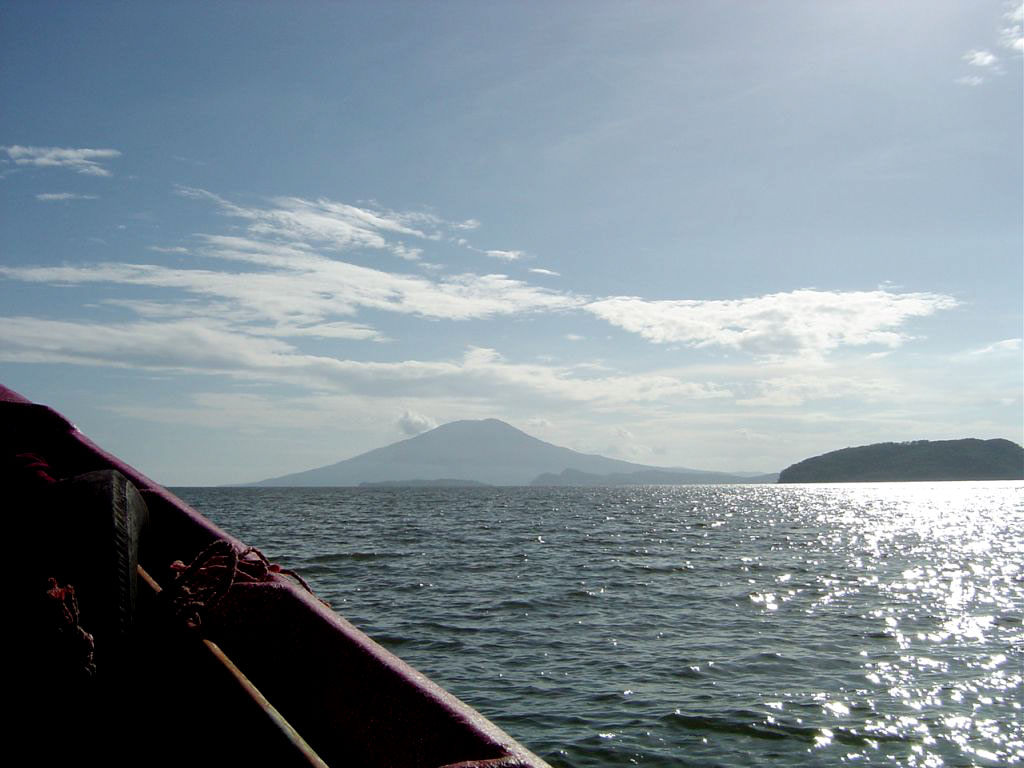
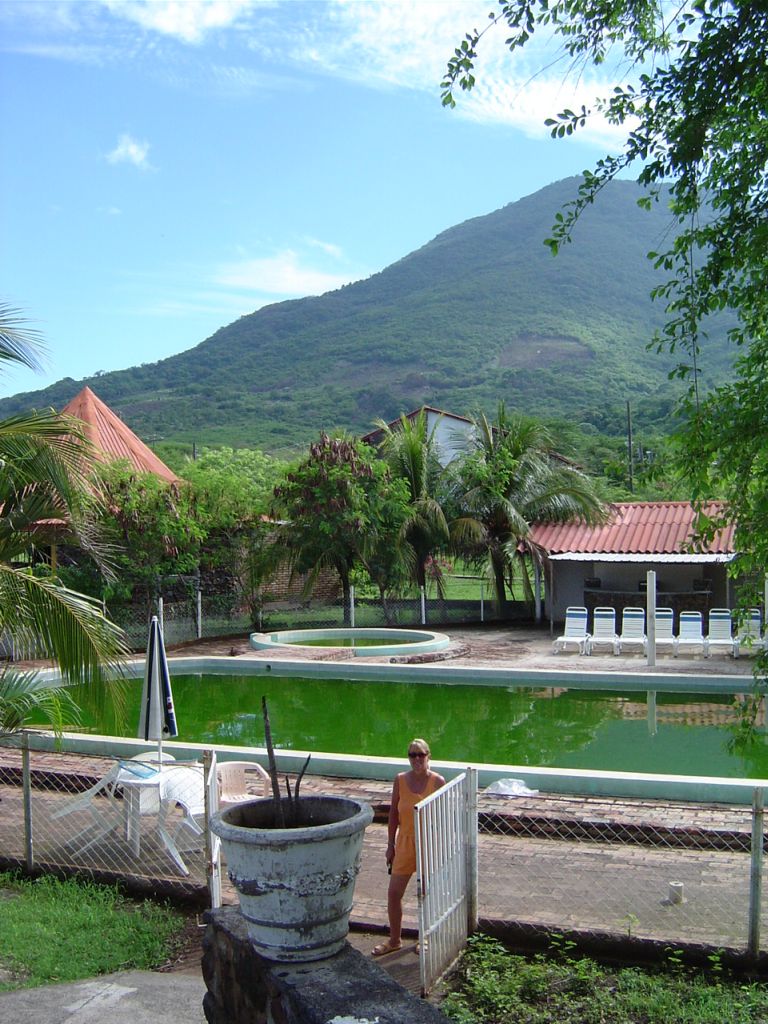
The green color of the swimming pool water is a "feature" not found elsewhere.
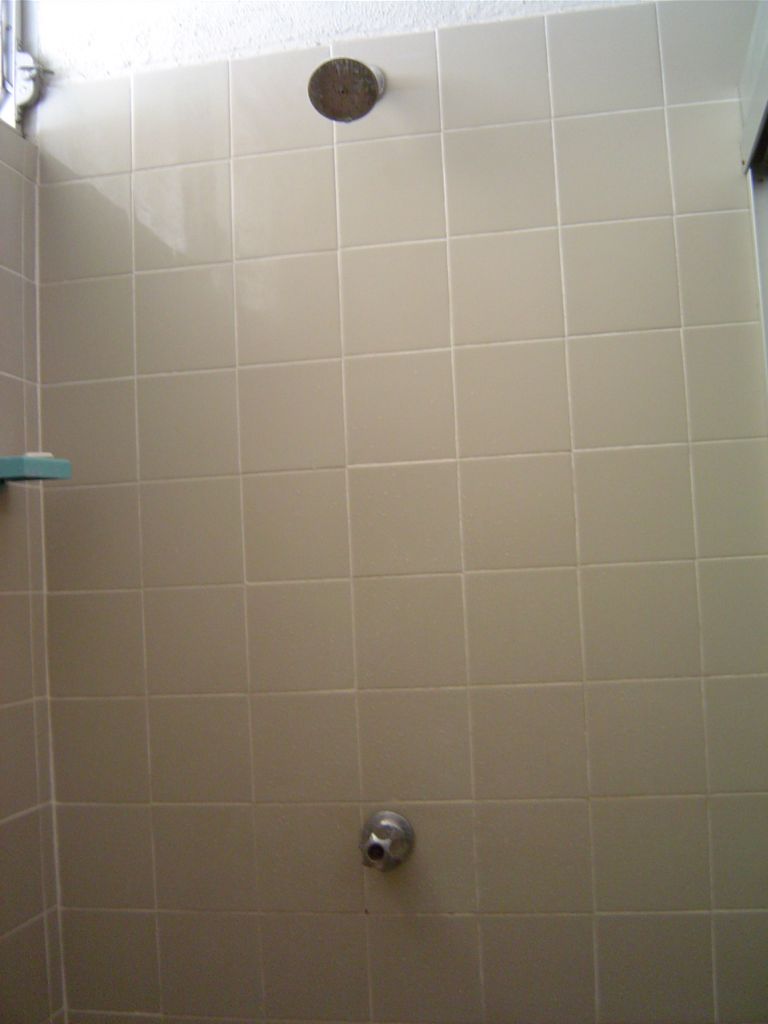
When you see only one knob in the shower,
the water temperature will be determined by fate.
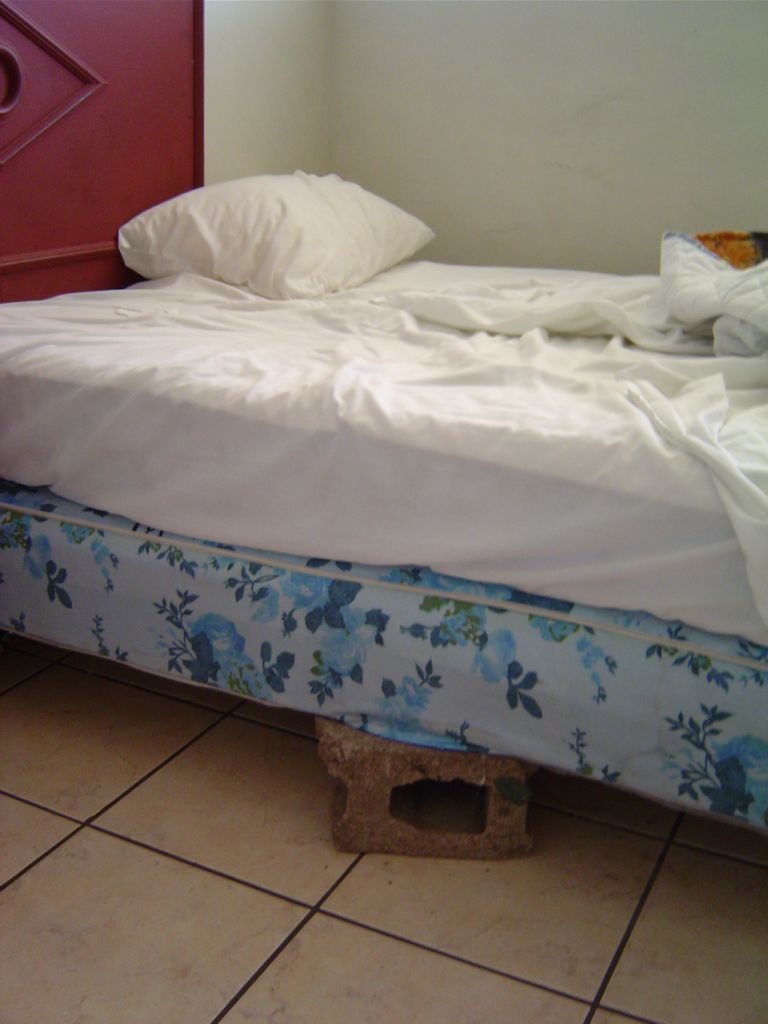
The reason humans have toes...
To help you find the concrete block under your bed at night.
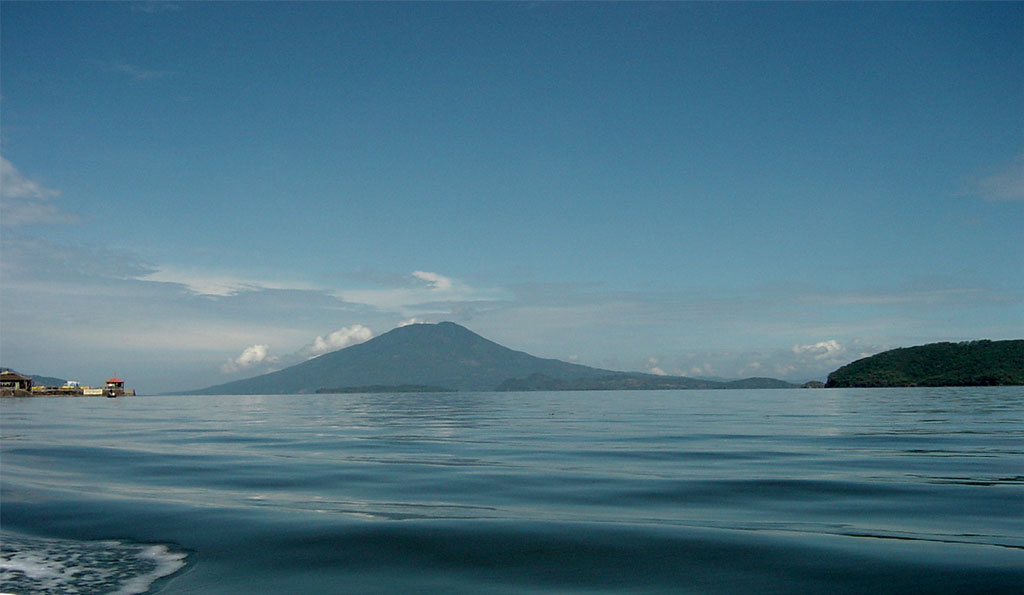
Returning to the mainland
May 31st
Tegucigalpa, Honduras
The capitol city of Honduras, Tegucigalpa, is 50 miles off the direct track, but I needed a new tire and Elsa needed some stomach medicine, items unlikely be found in the wide-spot-in-the-road villages we had been passing through. The Hotel Honduras Maya provided an oasis. With an English-speaking staff, free Internet access in the room, we could not tell we were in Honduras. By stepping into their room, we were totally isolated from the rest of the world; no clue allowed us to identify our location. It was as sterile as the previous night was infectious.
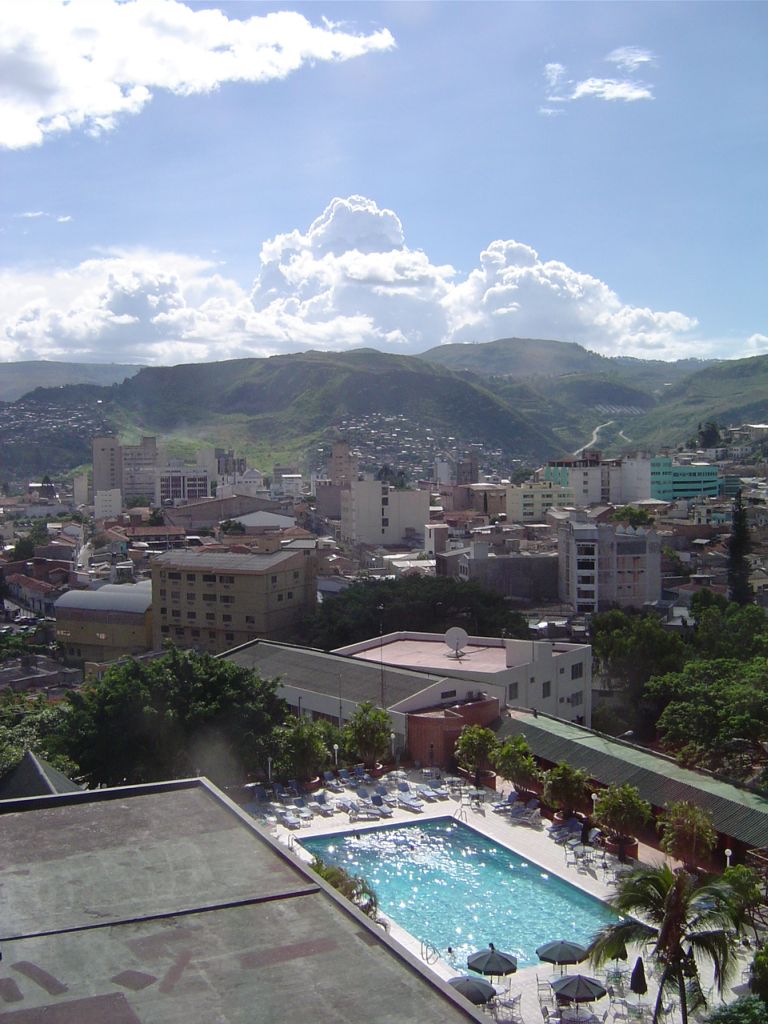
How a hotel swimming pool is supposed to look
June 1st
The hotel staff sent us to a local shopping mall, explaining that the automotive department of "Price Smart" would have a good selection of tires. The store layout was identical to any Costco in America. I found the tire I wanted and had the shop mount it in short order.
The adjacent mall could have been lifted directly from any American city. All the names were there, Burger King, Nine West, United Colors of Beneton. Sears was next door. Signs had been translated into Spanish, as a courtesy to those who lived there.
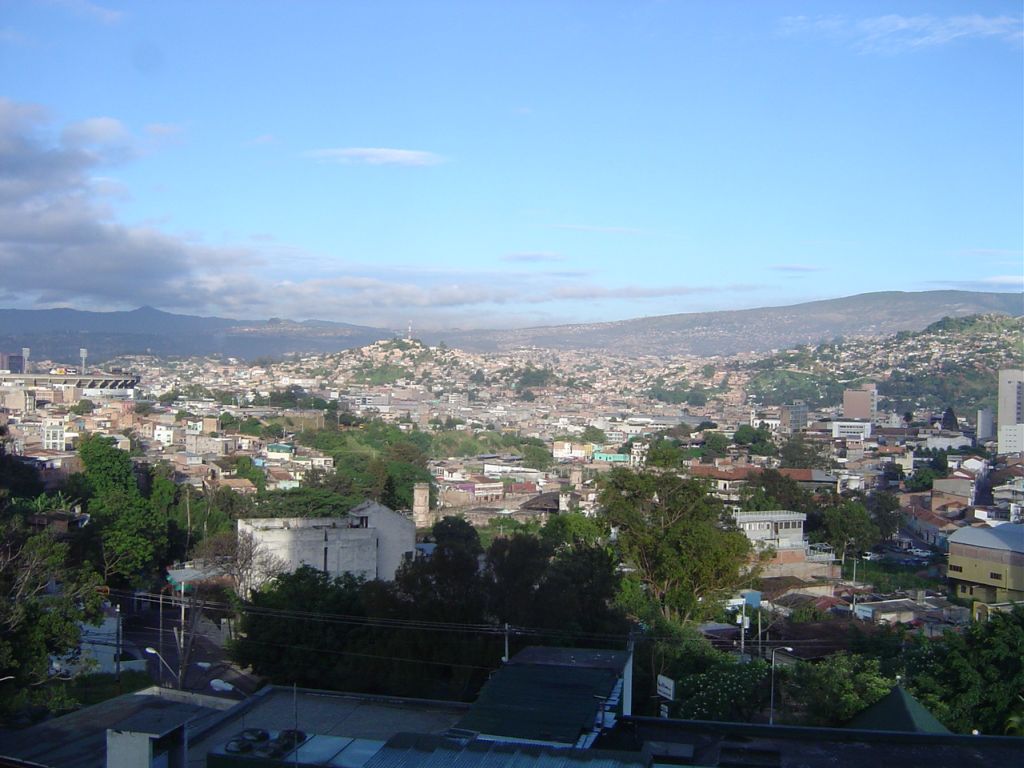
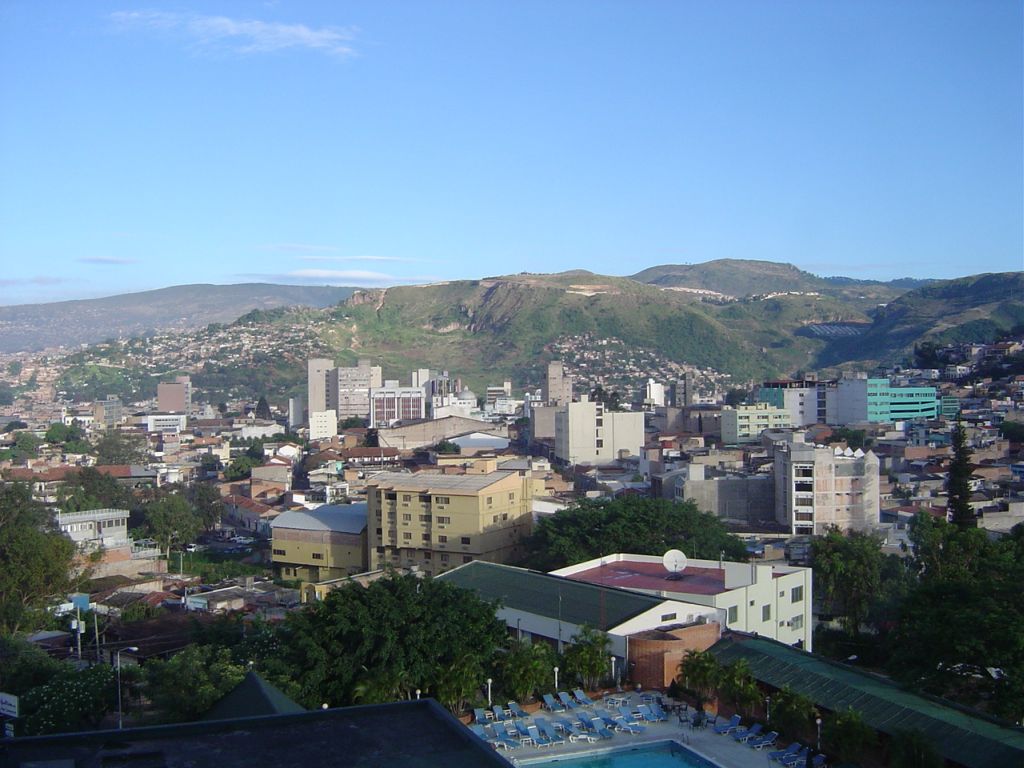
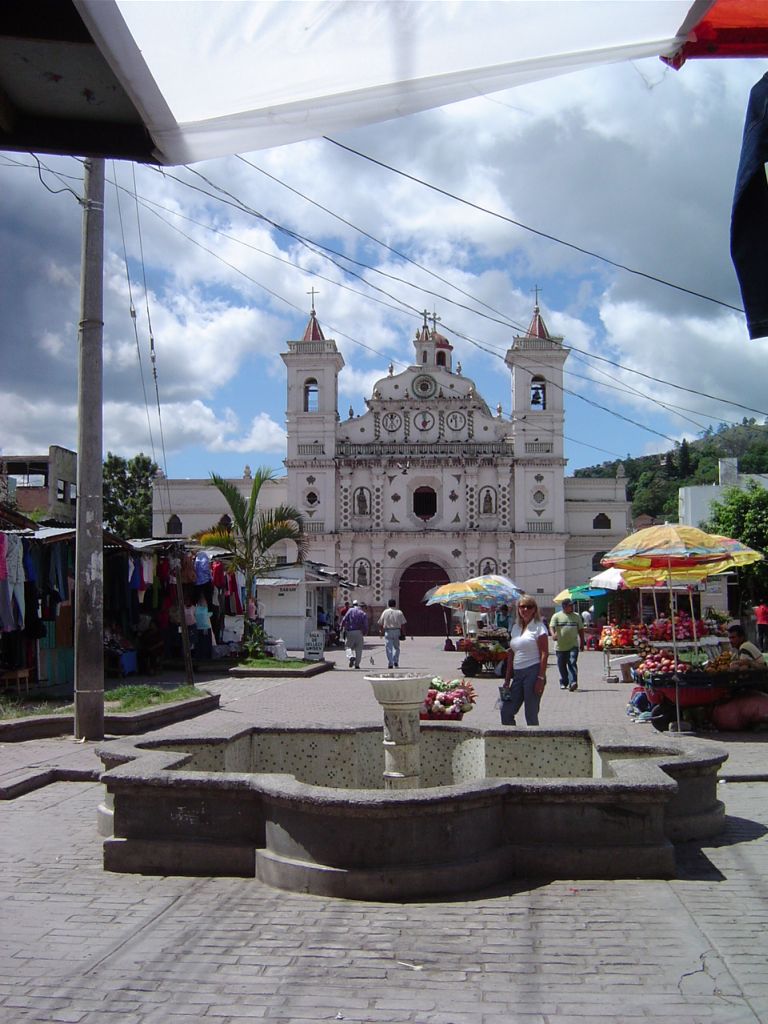
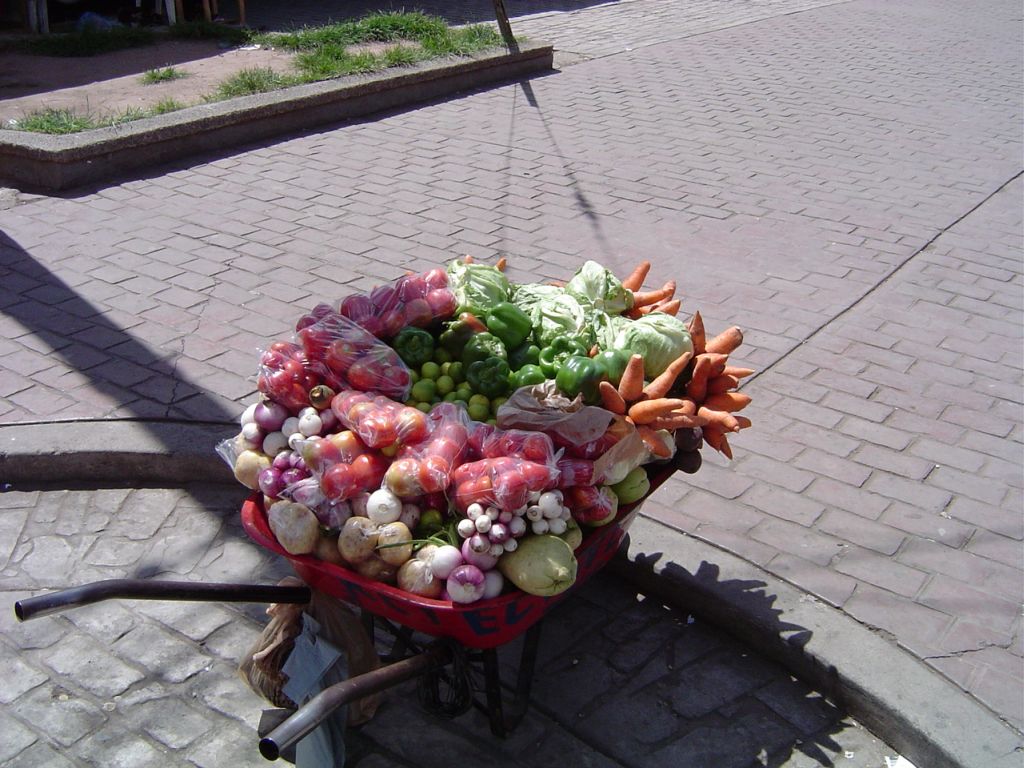
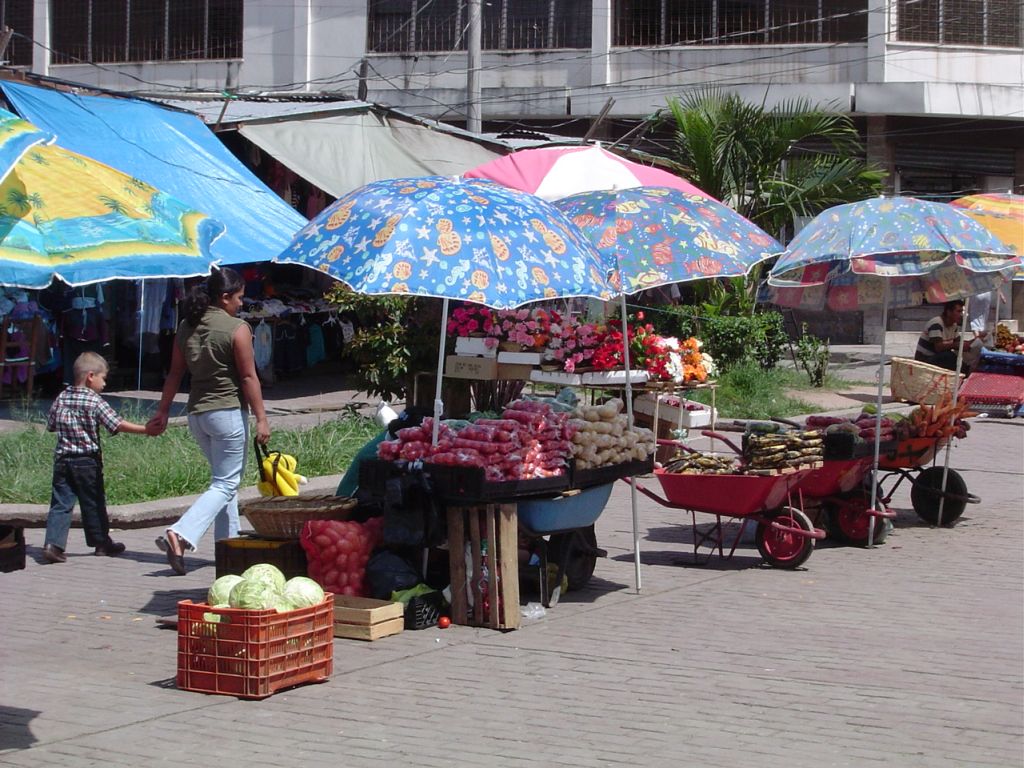
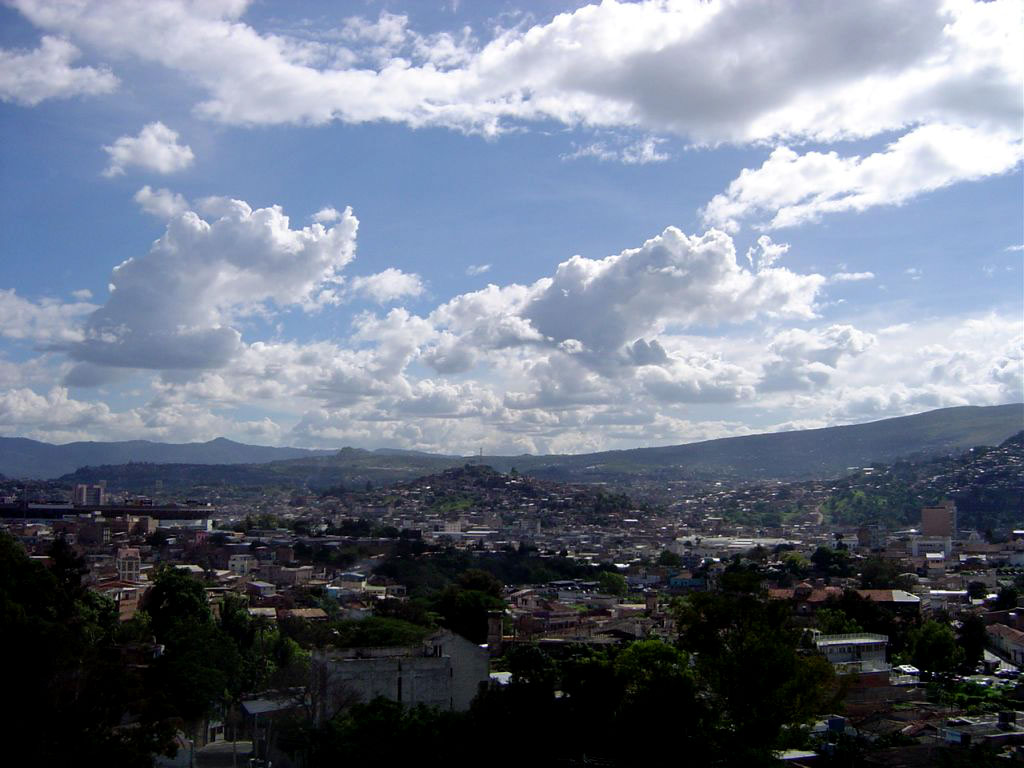
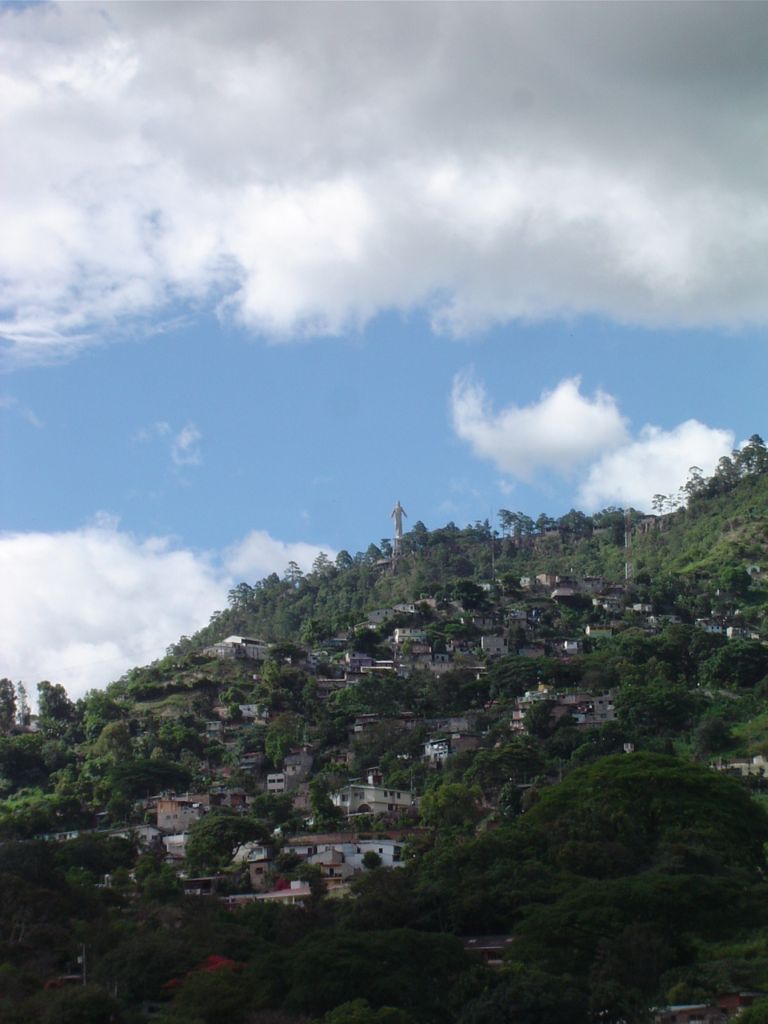
June 2nd
Rested, we were ready to attack another border. Leaving Honduras went smoothly. Entering Nicaragua took more patience. The immigration issue is always simple. Checking out of the old country is free. Checking into the new one never involves more than filling out a simple form and paying a dollar or two.
Getting the car across the border is another issue. Checking out of the old country is free, but checking into the new one involves forms and inspections and delays limited only by the imagination of a government needing ways to keep idle people employed. Inserting carbon-paper between multiple sheets of forms stuffed into a typewriter and collecting money for it is the usual way to go.
One of the inept clerks tore one of the pages as she it pulled out of the typewriter, bringing an international border crossing to a standstill while a roll of tape was located. Naturally, they found one of those wide rolls of packing tape that has the almost-impossible-to-find end. In exasperation, I went to the car, found a roll of Scotch tape on a dispenser and offered it to her. It wasn't long before the poor girl had that tape stuck on itself and twisted around her fingers in a general mess. To add insult to injury, she wouldn't take the US twenty dollar bill I offered as payment because it had a little tear near the corner. Strange, that their own money wasn't good enough.
The customs inspector wanted a peek in every suitcase, the first time that anybody had looked at anything inside the car.
School buses, usually painted in gaudy colors, provide low-cost transportation through all of Central America. The rear door, opening out the back, is used for quick exits, as the bus may not come to a complete stop at every road-side bus stop. The door remains closed when the bus is on the open road, however, so you can imagine our surprise when a passenger opened the rear door of a bus we were following at 60 miles per hour, stepped out on the rear bumper, unzipped his pants and relieved himself on the road whizzing by, opened the door again and went back inside.
Passing showers caught up with us at lunch-time in Esteli. Drying as we approached Managua, vendors standing at the roadside held up fish, iguanas and a lone armadillo for our dining pleasure.
We passed a chicken-processing factory adjacent to an egg-processing plant, but we couldn't tell which was there first.
A half-mile stretch of freeway outside of Managua, the capitol city of Nicaragua, gave us such a surprise that we couldn't get a camera out and turned on. Black plastic sheets and wooden sticks were used to make hundreds of tents, arrayed along the side of the road. I can only imagine how desperate one must be to live in such a situation. You couldn't own anything... it would be stolen when you went to the bathroom. Wait a minute, bathroom??? Take a shower? It's the rainy season, so sleeping in the mud must be the norm.
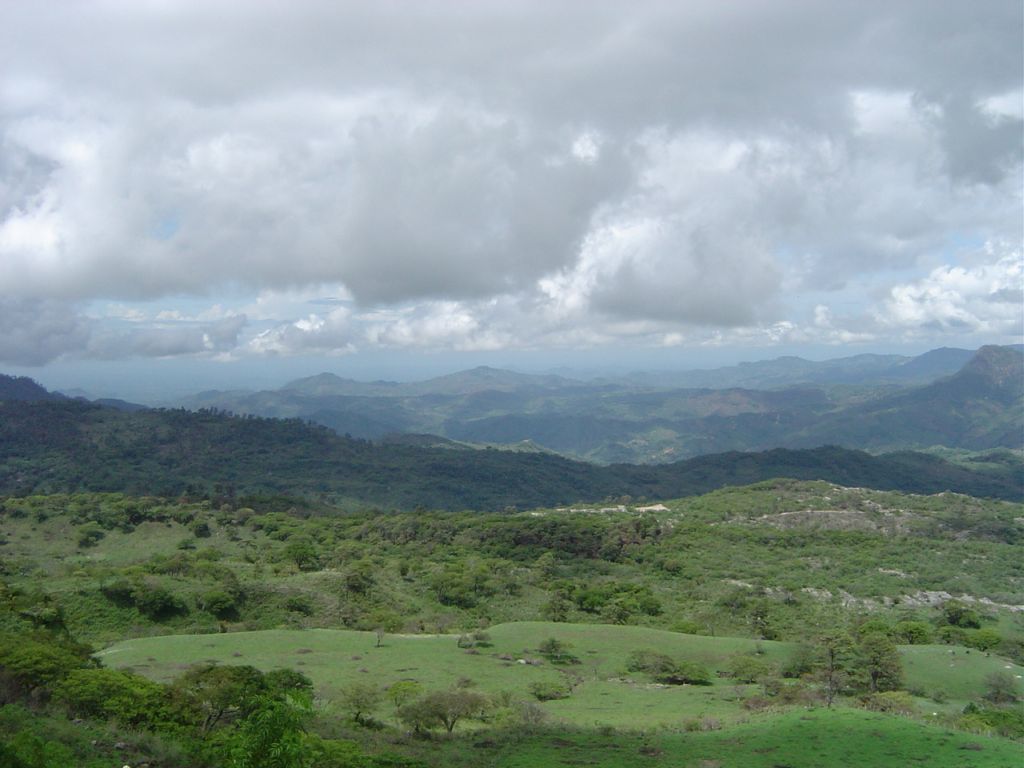
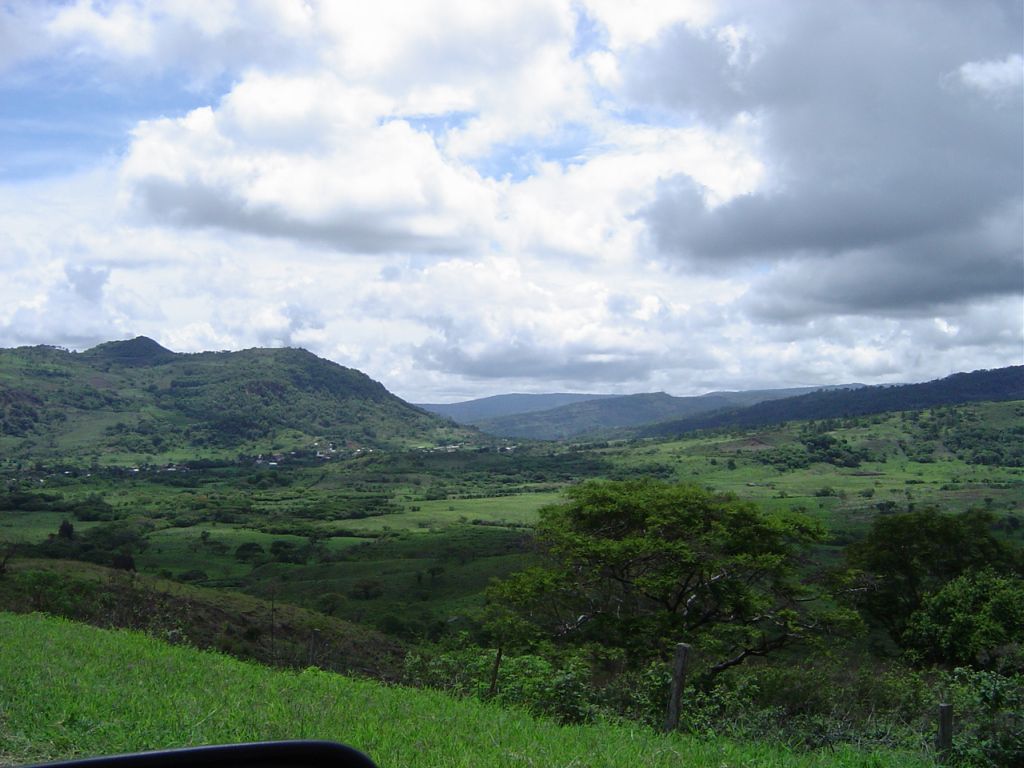
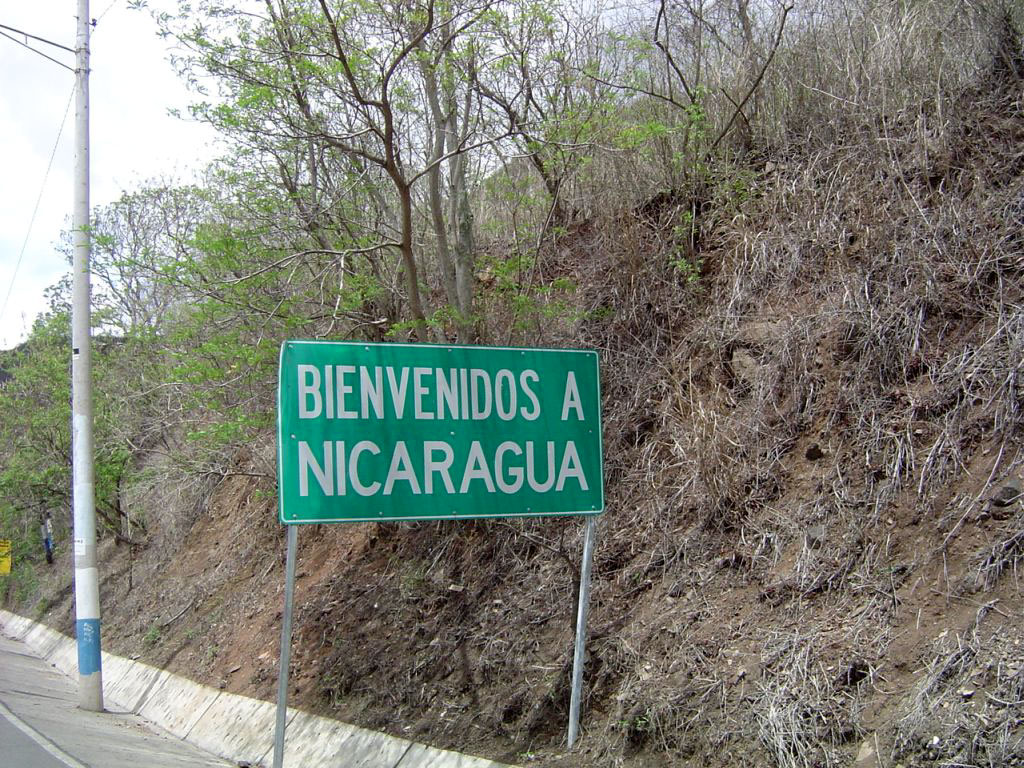
Welcome to Nicaragua
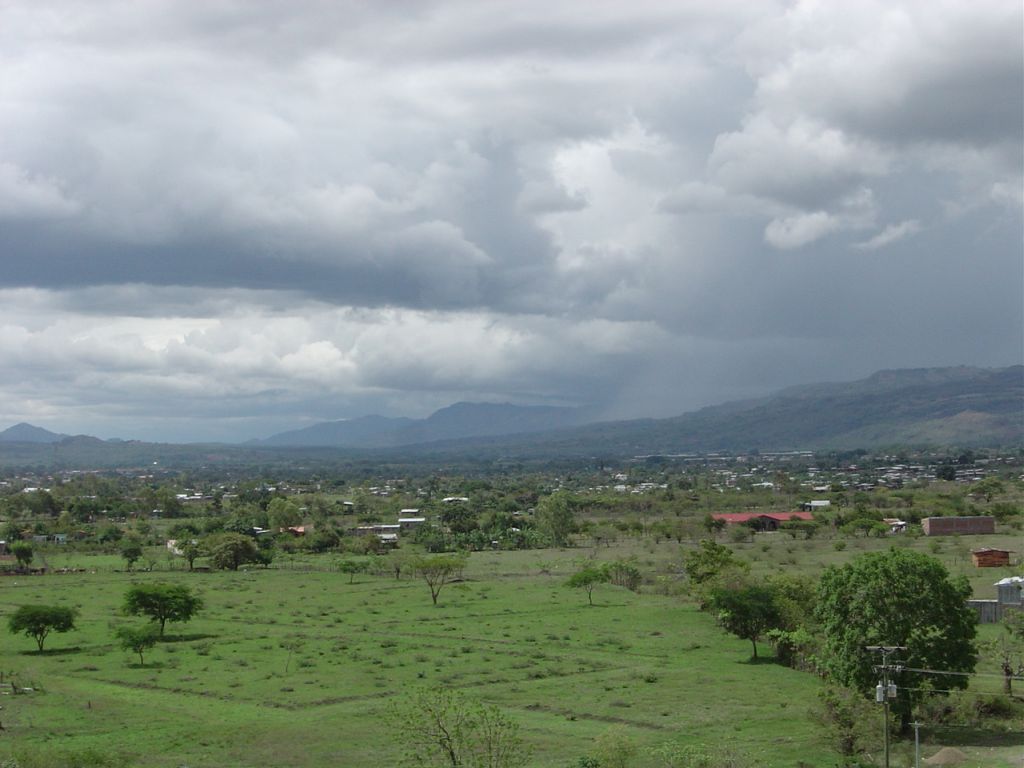
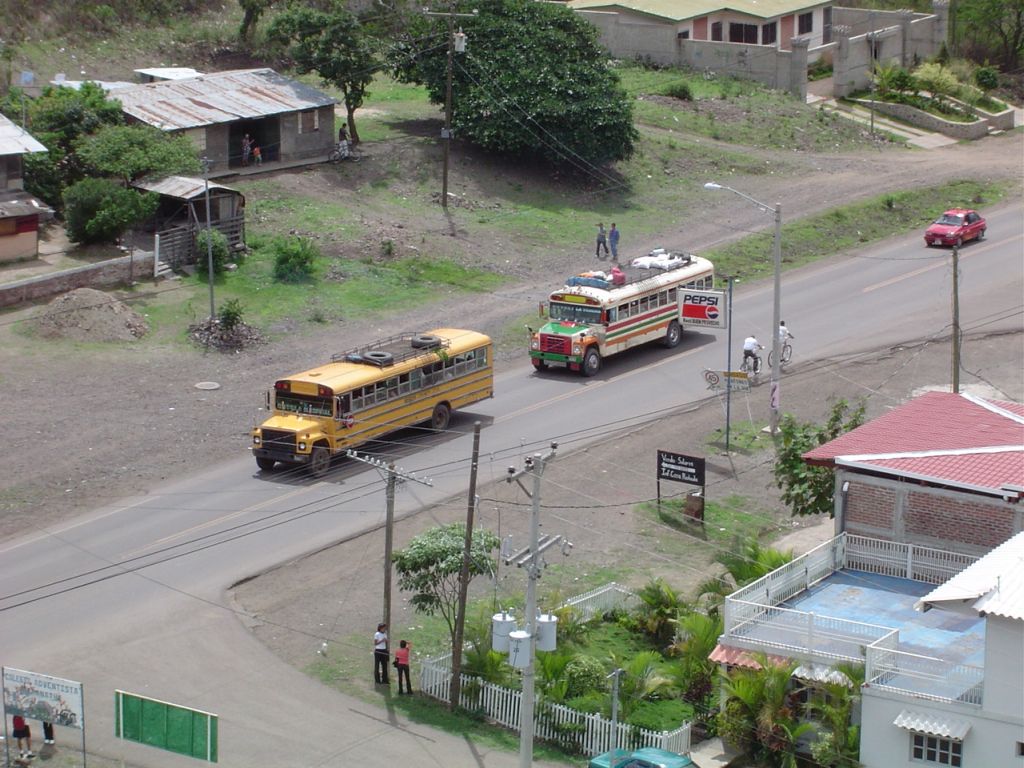
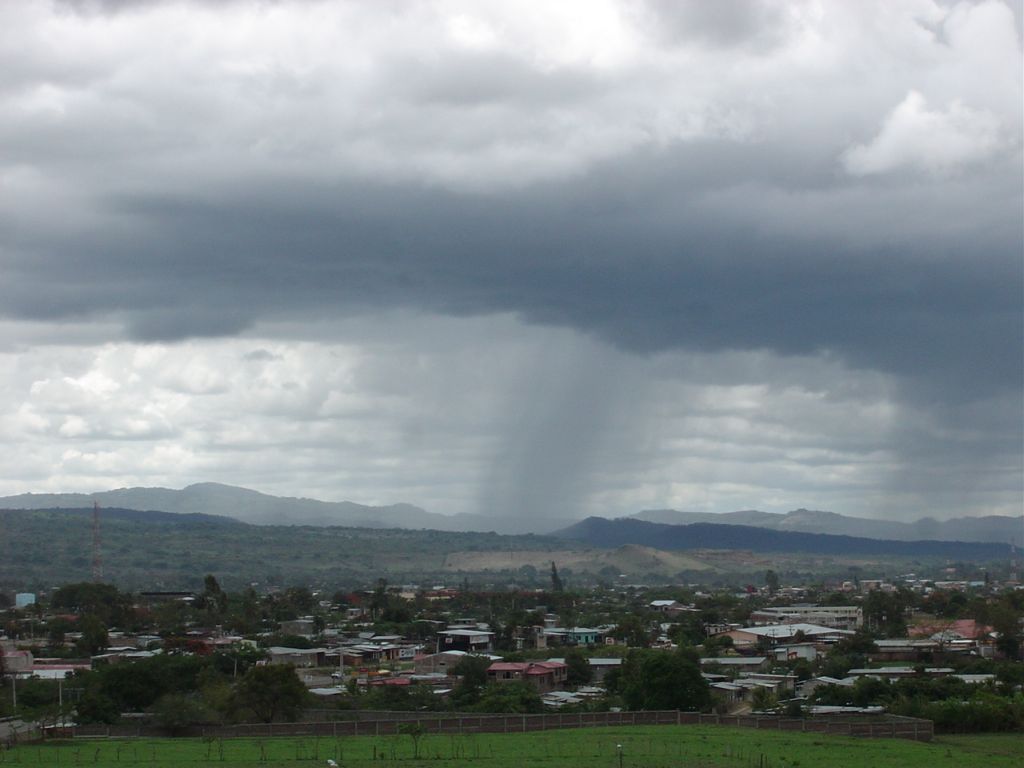
June 3rd
Cheer up they said, things can't get worse. So we cheered up, and sure enough, things got worse. Managua is, without a doubt, the most depressing city on the face of the earth. From the torn-up road in, to the squalid shacks passed on detours due to construction on the awful road, to the trucks full of pigs you must follow, to the trash and dirt where parks should have been, to the Cathedral Viejo, where birds fly through the missing windows, to another plastic-tent city across from the arboretum, Managua is unquestionably an eyesore. Forewarned, we took a taxi in and, very quickly, another one out, not wishing to navigate the un-marked streets on our own.
It's only 20 km to the turn toward Masaya, but with no signs to mark it, we wandered around a bit before discovering where it was. Potholes were the distinguishing feature of the only route. The Mercado de Artesania provided lunch and some souvenirs before we launched for Granada, a city markedly different from Managua. Civic pride was evident, with well-cared for colonial style buildings and relatively clean streets.
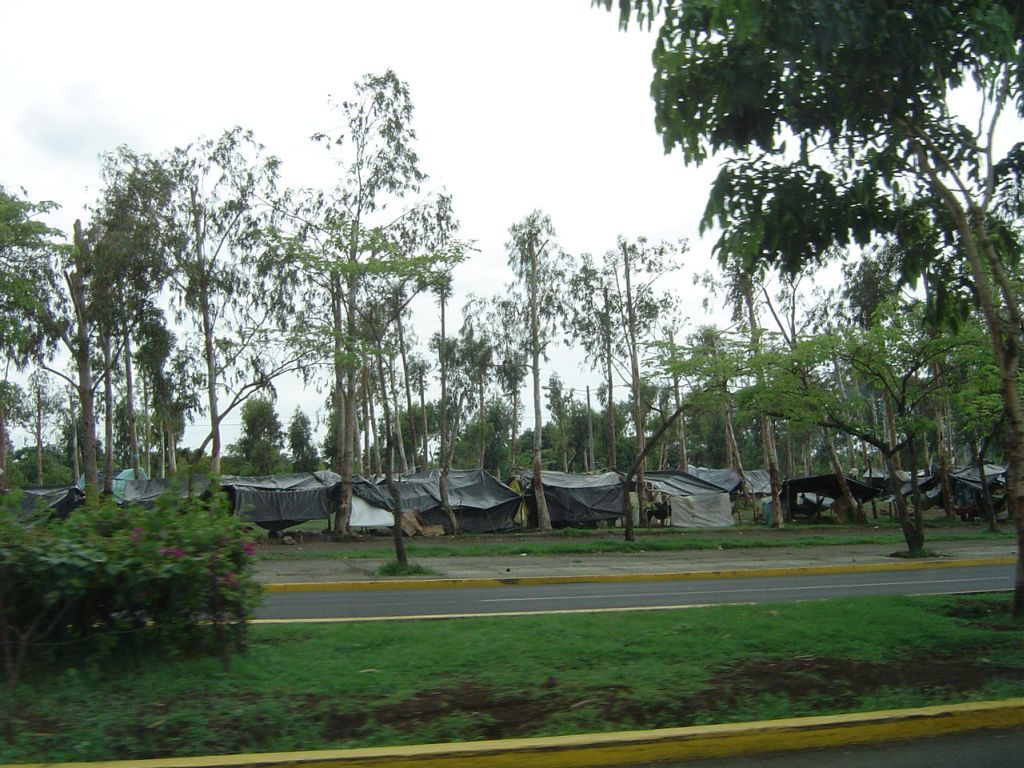
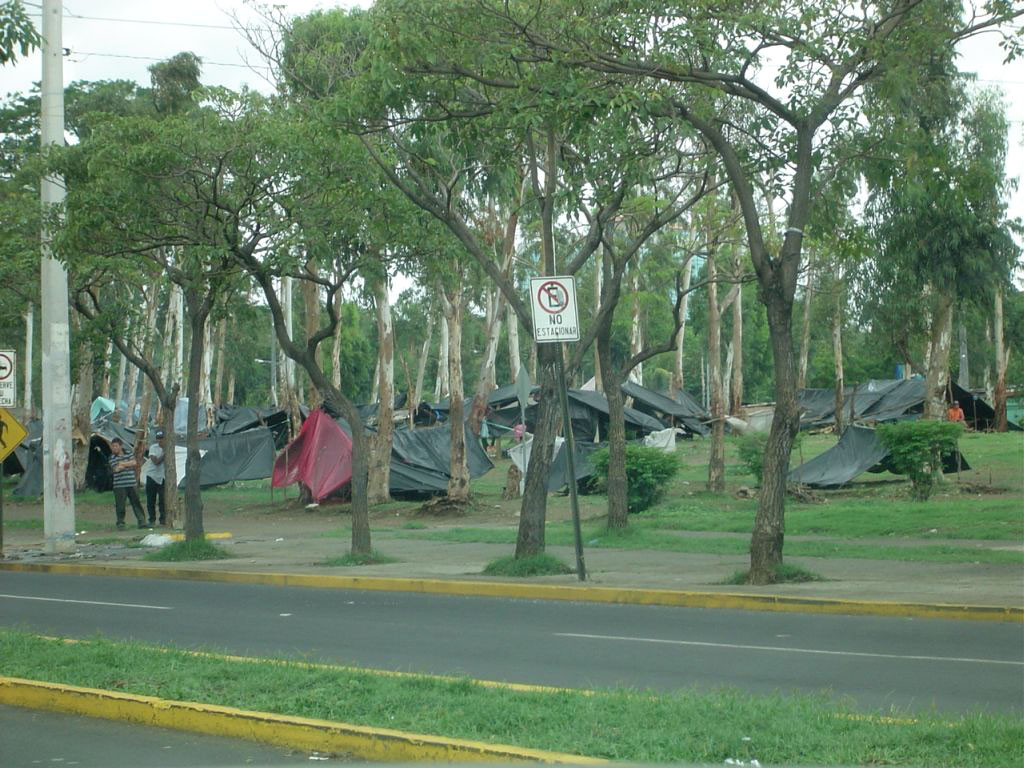
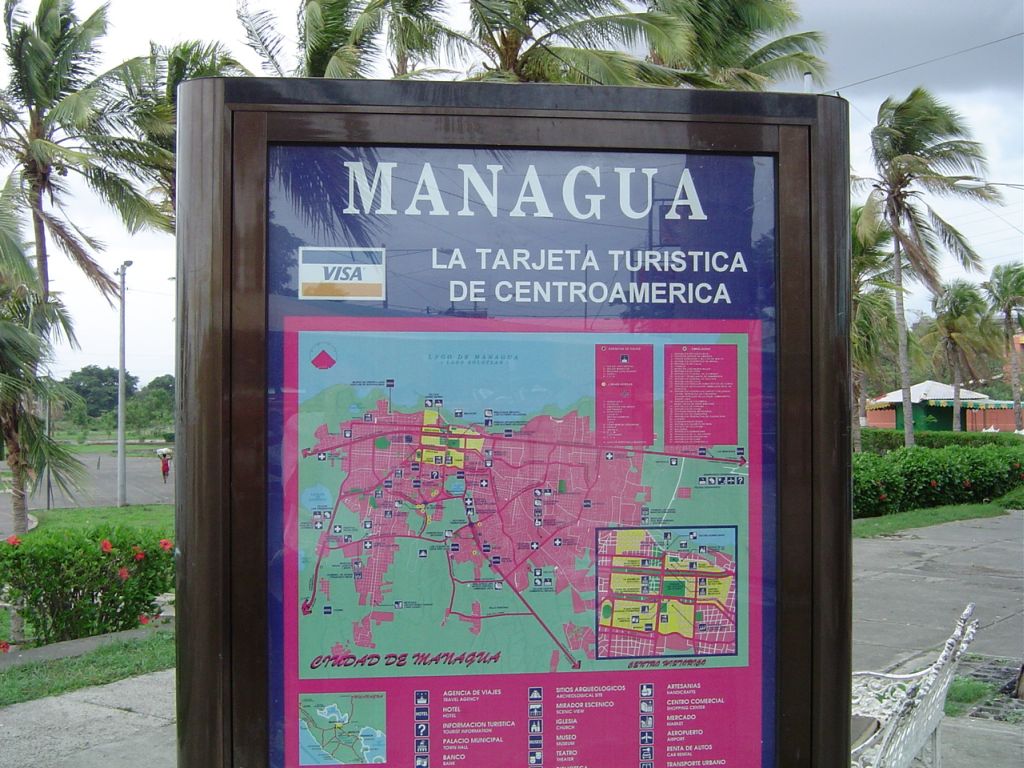
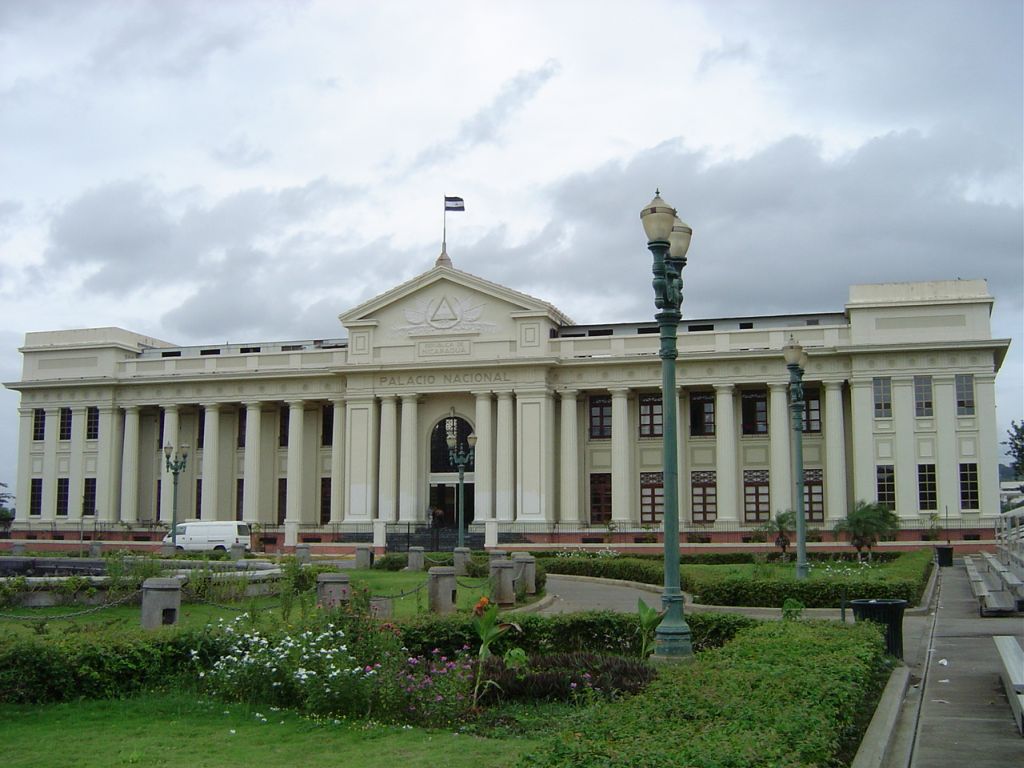
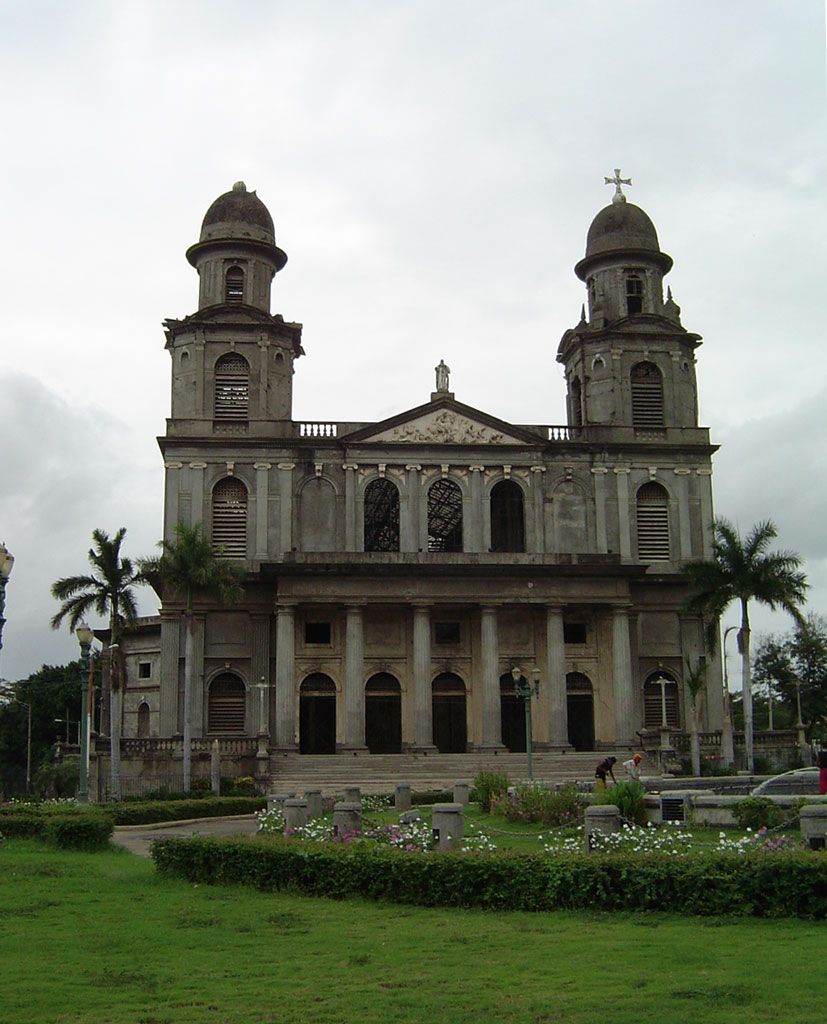
Cathedral Viejo, where birds fly through the missing windows
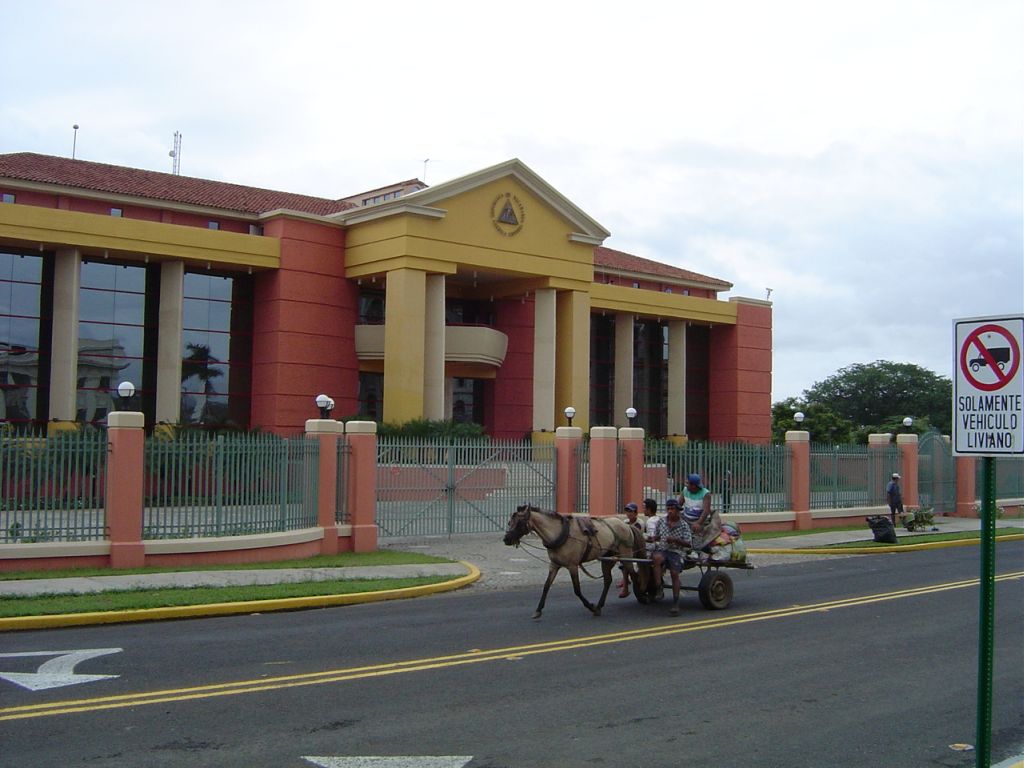
Everythings up to date in Managua
June 4th
A cloud-forest differs from a rain-forest by virtue of being up on the top of a mountain which sticks up into the clouds. A rain-forest is found at lower levels, below the clouds, and is generally warmer. Our tour of the cloud-forest of Volcan Mambacho was, basically, a tour of the inside of a cloud; we couldn't see a thing except fog. There were lots of orchids and bromeliads and a snake and a frog and some tadpoles and a hole in the ground that had hot air coming out. The 22 species of reptiles and 171 species of birds were taking the day off. A few of the 50,000 species of insects did make themselves known, mostly around the ankles. The truck ride up and down the steep slope of the mountain, grinding along in first gear at 2 miles per hour, added injury to insult. Our ears will heal, I hope.
Catarina is one of the cities of the Pueblas Blancos, getting the name from the white "carburo" made from water, lime and salt, with which the houses are painted. Our impression was one of wonder, not at the white houses, but at the incredible number of nursery stores adjacent to each other. We couldn't figure out who was buying all of those plants. The city is perched on a bluff giving a splendid view of Laguna de Apoyo and Lago de Nicaragua, the tenth largest fresh-water lake in the world.
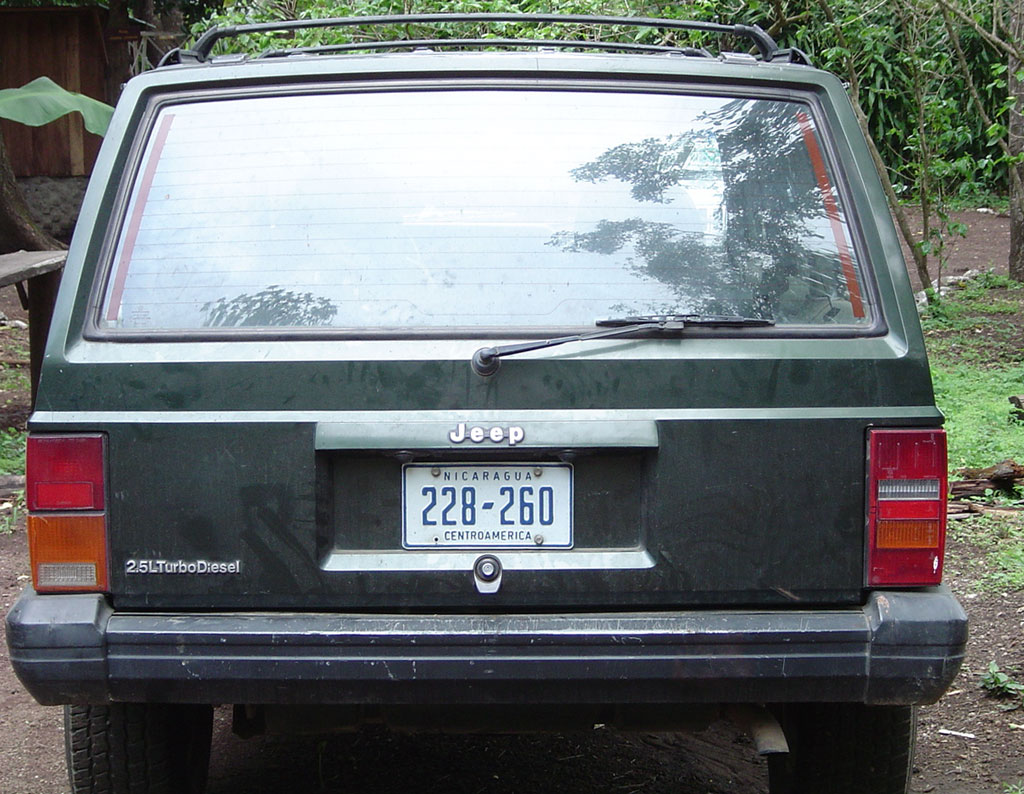
There is only one Jeep in Nicaragua. This is it.
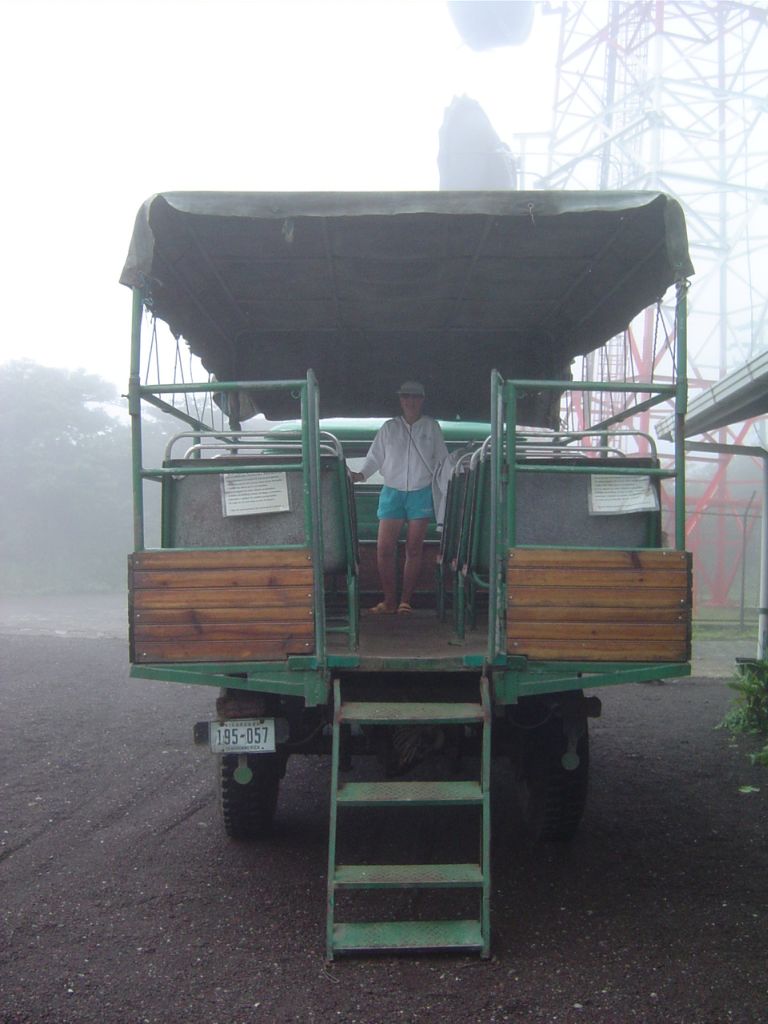
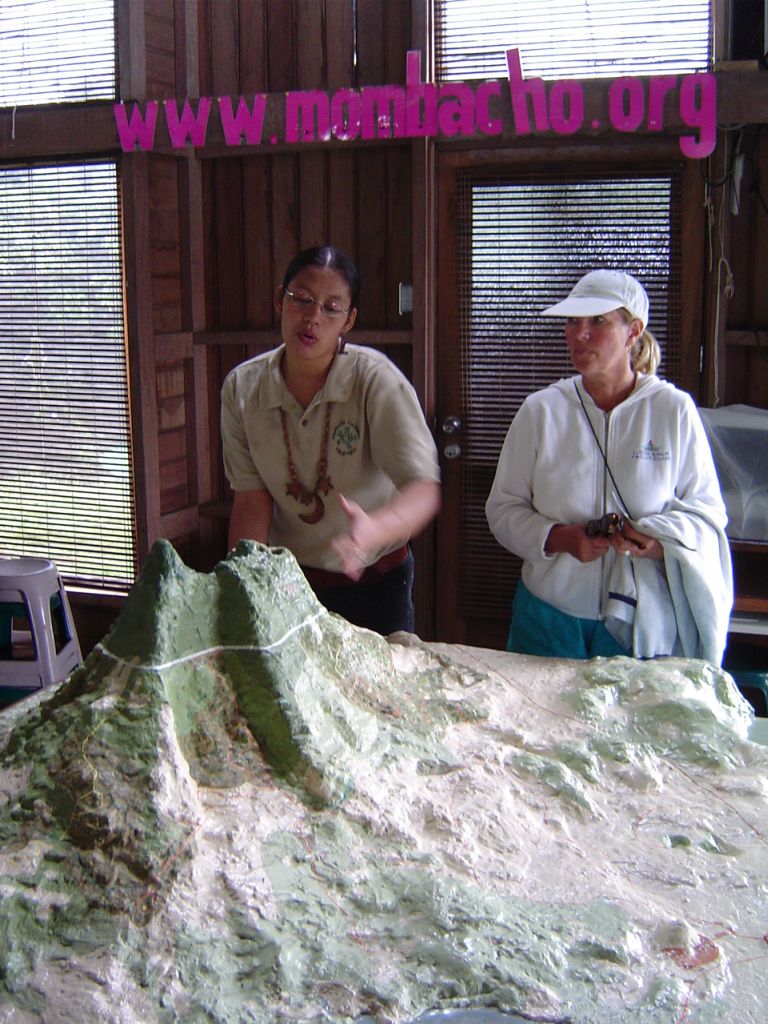
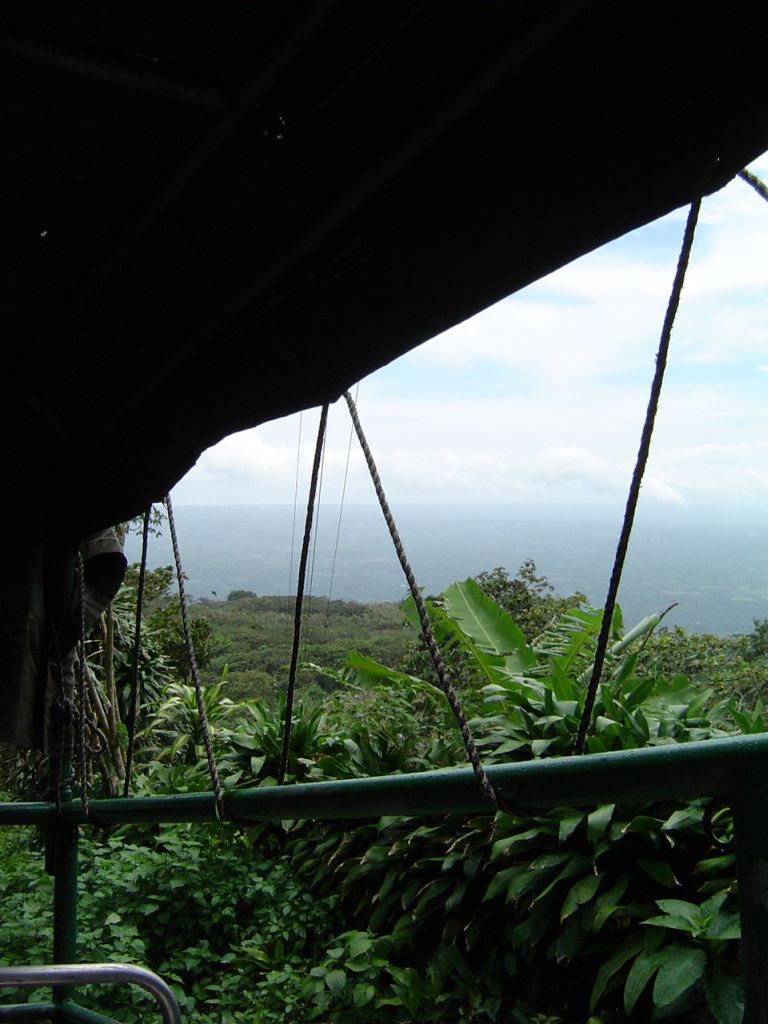
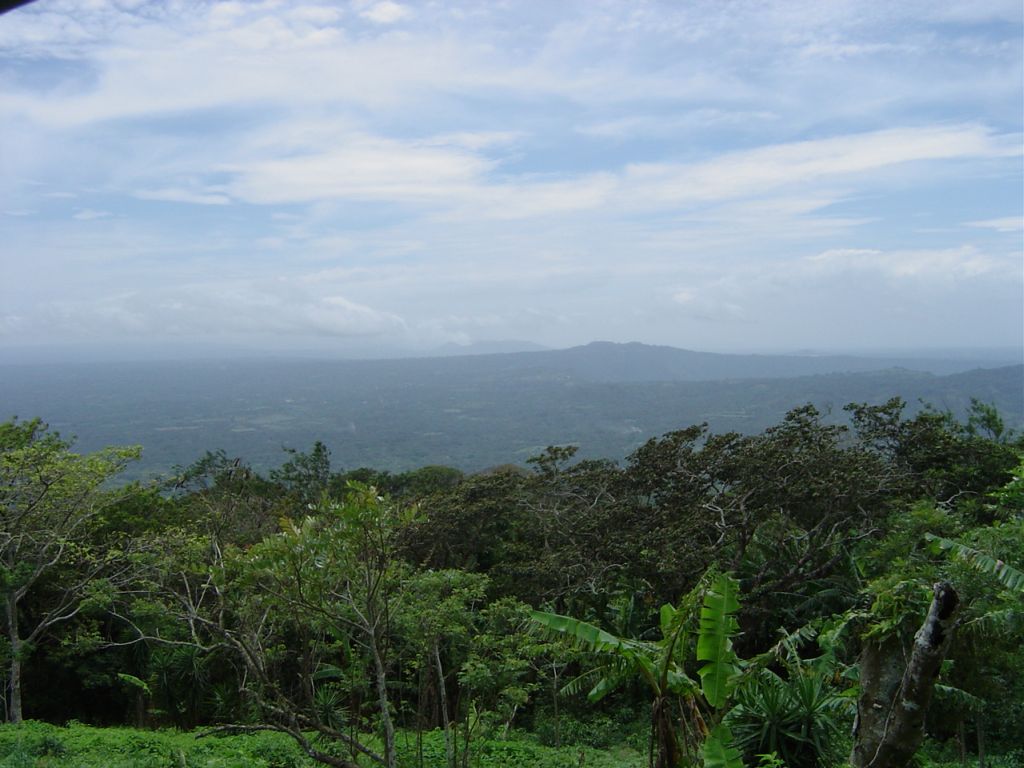
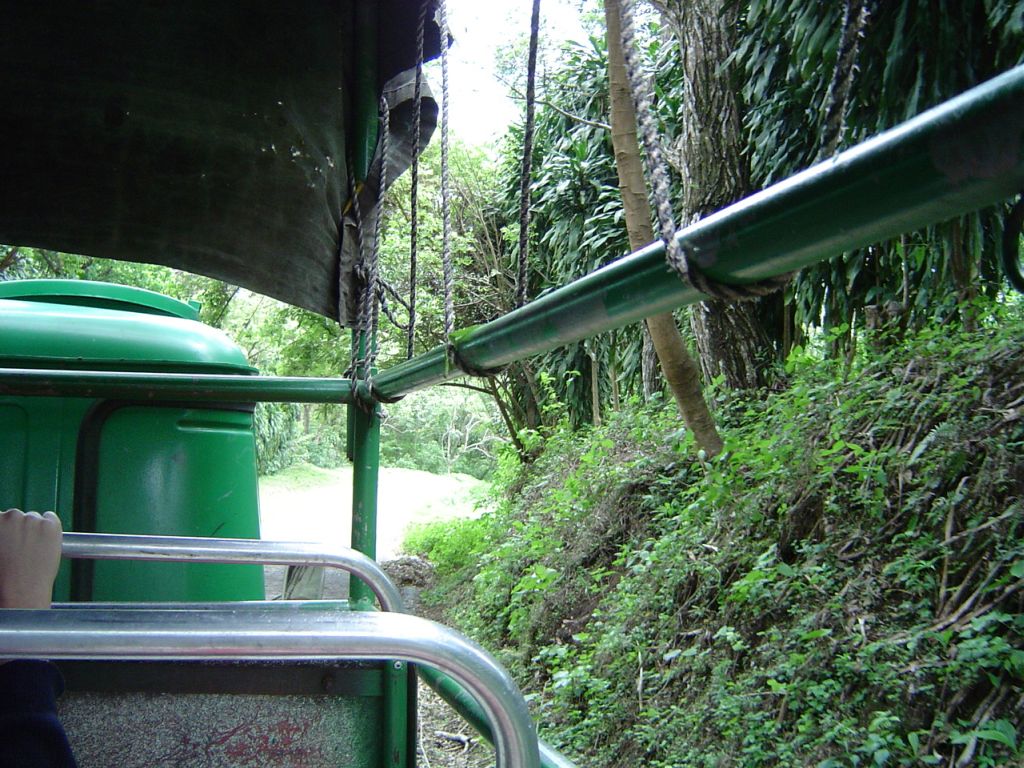
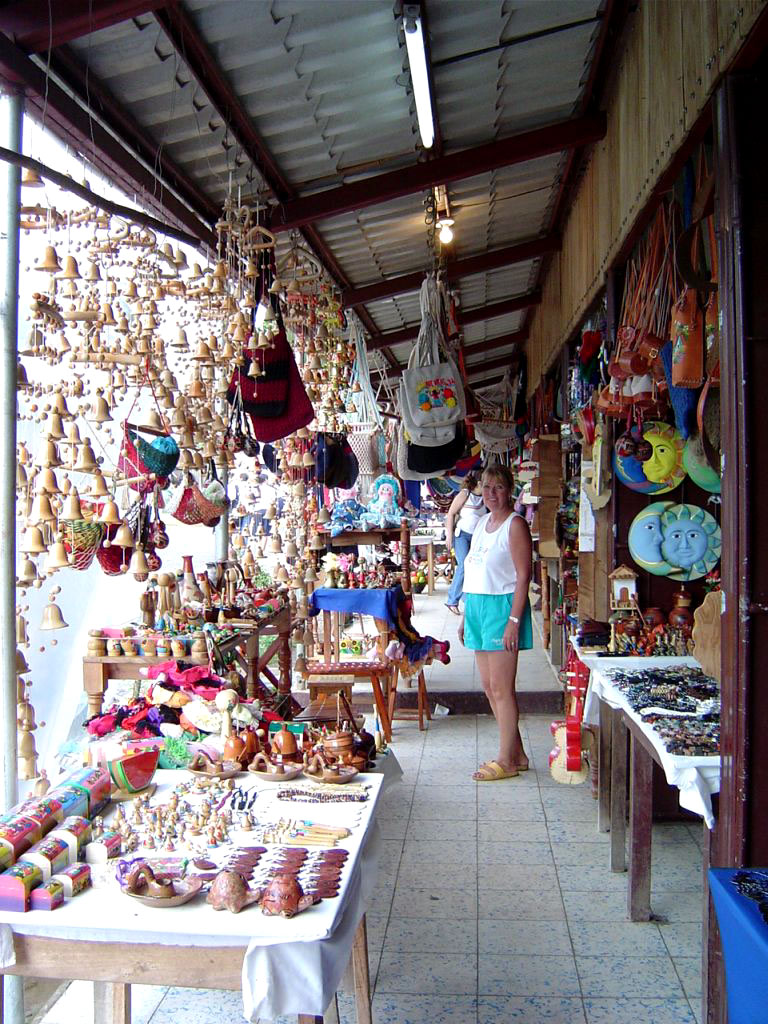
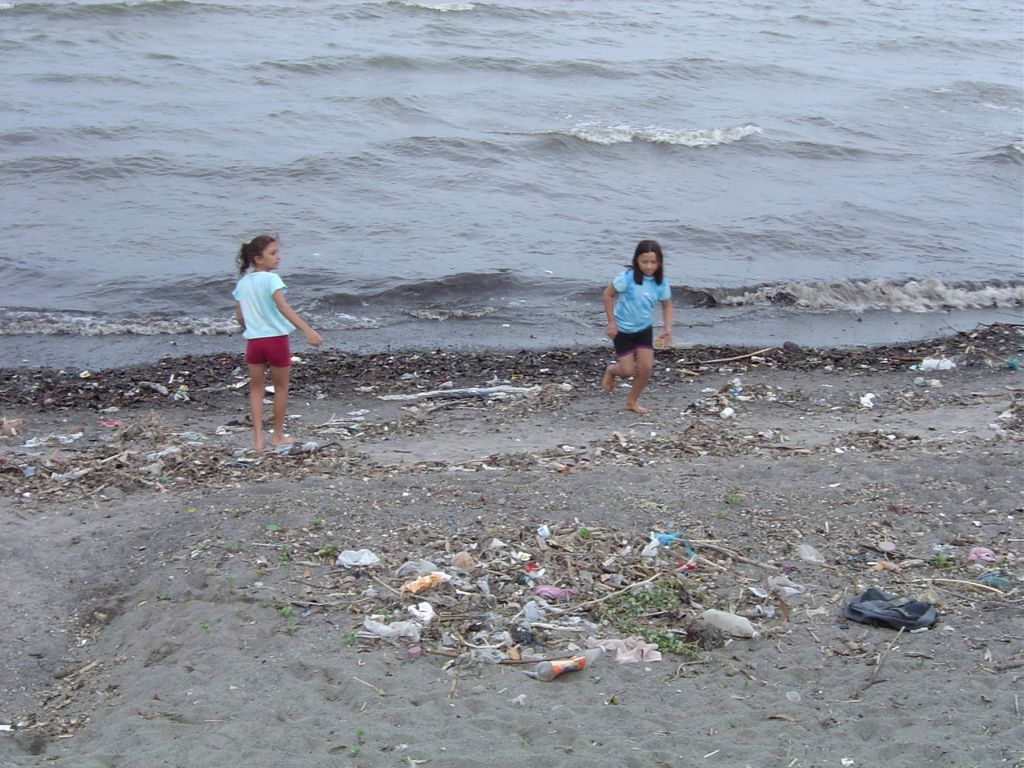
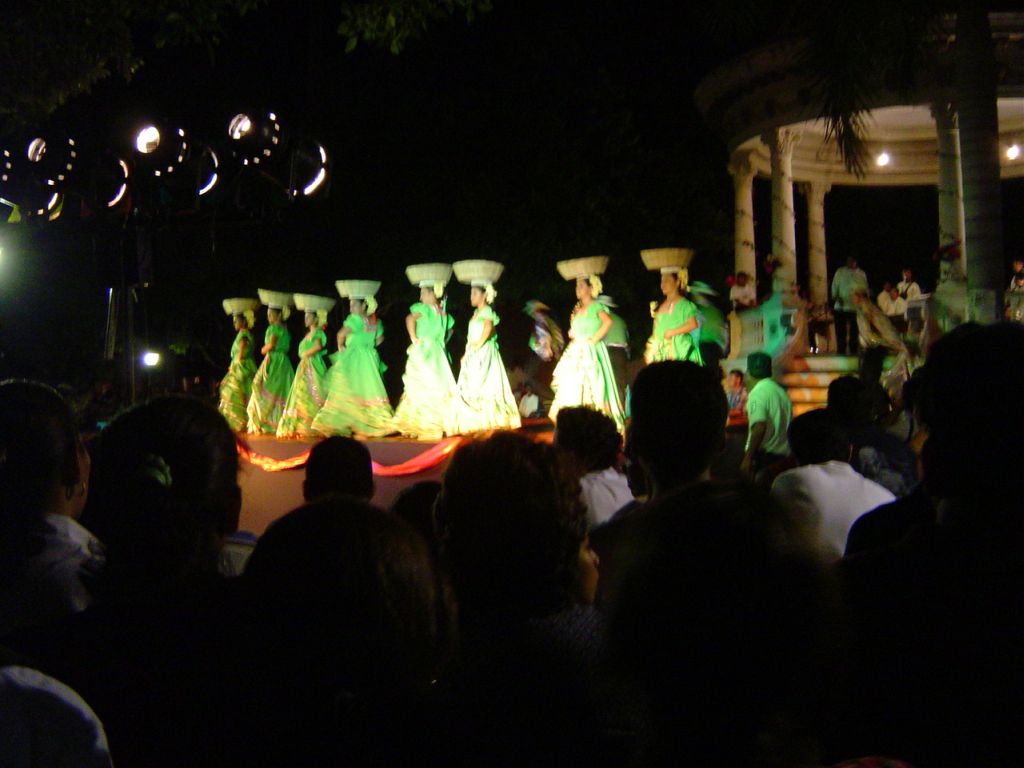
June 5th
Our hope was that San Juan del Sur, poised just a few kilometers from Costa Rica, would lead up to the splendor we hoped to find as we crossed the border; it was billed as home of the Nicaraguan jet set. These people apparently left in their Cessnas and Pipers many years ago. There were a few rather sad hotels and a few rather sad restaurants.
Our hotel had one of those electric water heaters that perch on the end of the shower head. Heating starts when the water begins to flow. The beauty of that system is that you never run out of hot water for your shower since it's made for you on the spot. Until the electricity goes out.
All of the lights in the town went out at 8 PM, right in the middle of dinner. The restaurant we were in was prepared, however. They had some 12 volt automotive lamps strung up in the rafters, powered by a car battery, running within minutes. The adjacent restaurant closed up shop.
A ten year old boy, selling bags of cashew nuts from a plastic container balanced on his head, approached our table just as Elsa pushed away her dinner plate. "For me?" he asked. "No, vamanos," she replied. Thinking that he might enjoy the remaining rice and salad, I called him back. He took the plate to the next table and inhaled the food. As we walked out, our waiter, a fifteen year old boy, was making him carry his dishes back to the kitchen. He didn't mind waiting on us, but he wasn't about to wait on a freeloader.
The hotel provided us with a candle to light our room. It served us well, but having the air-conditioner running would have been better.
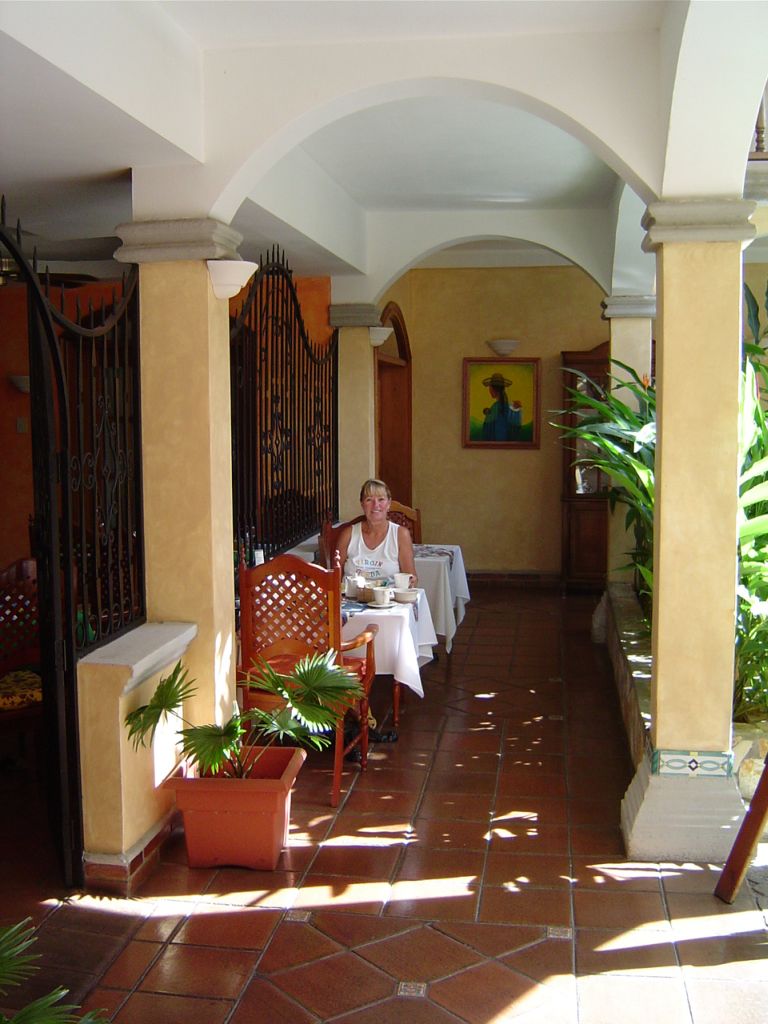
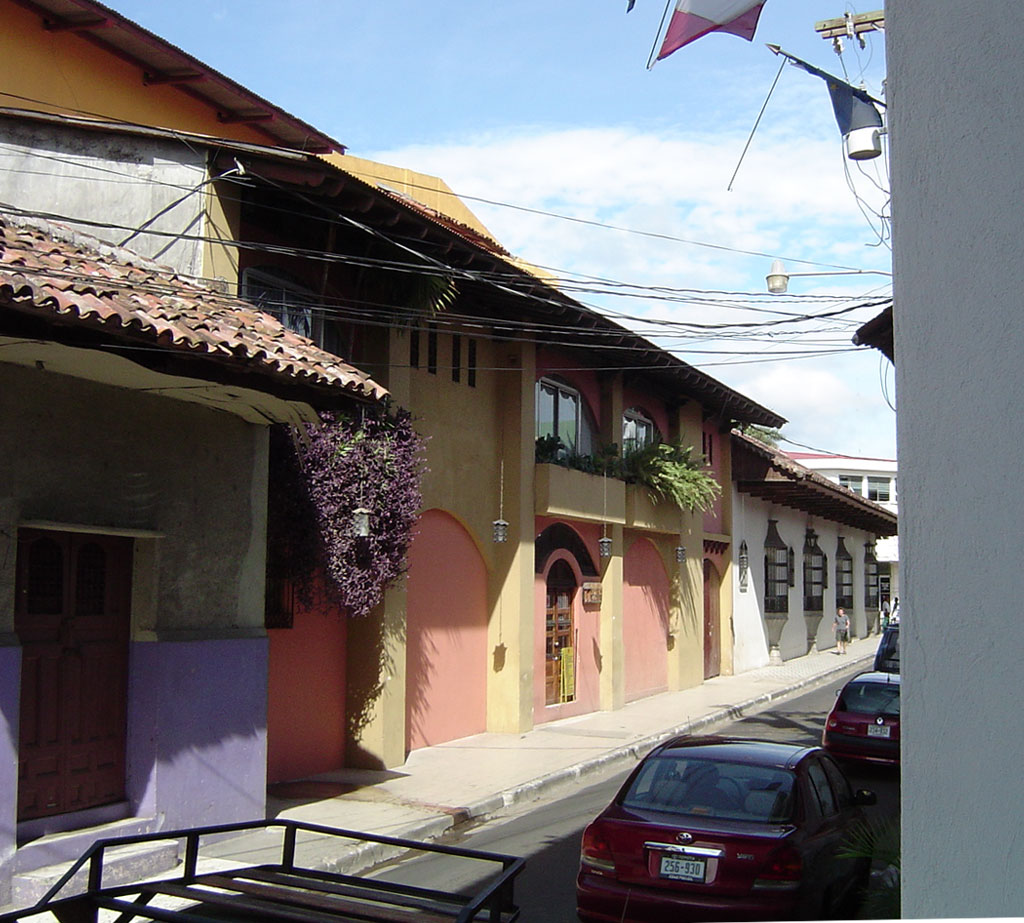
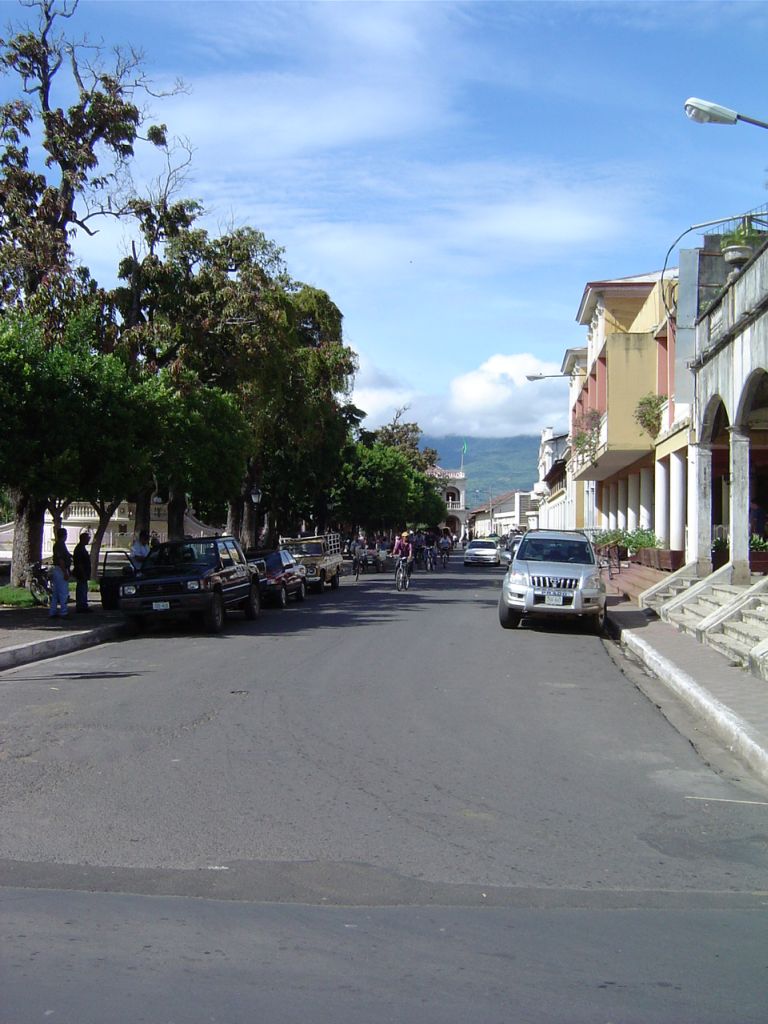
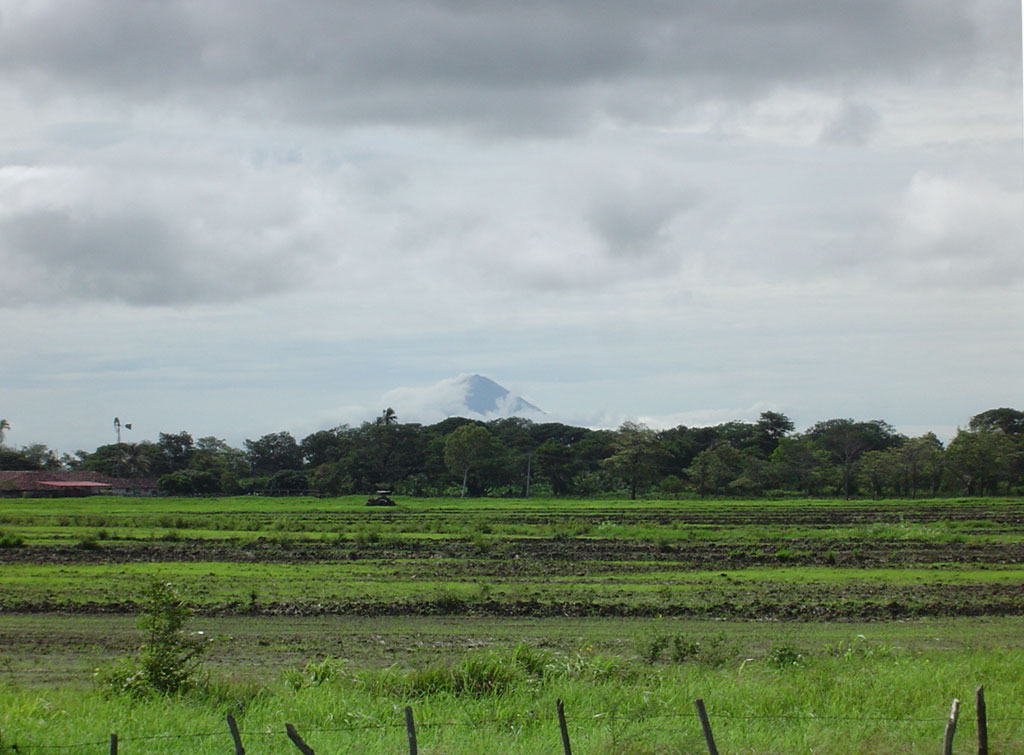
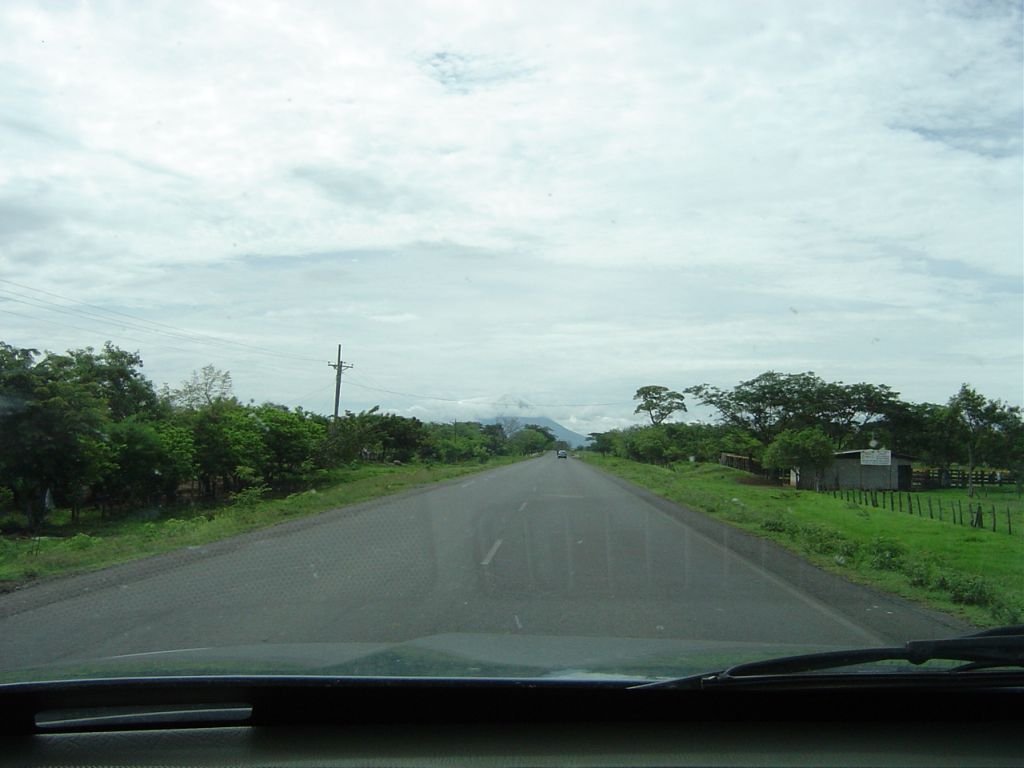
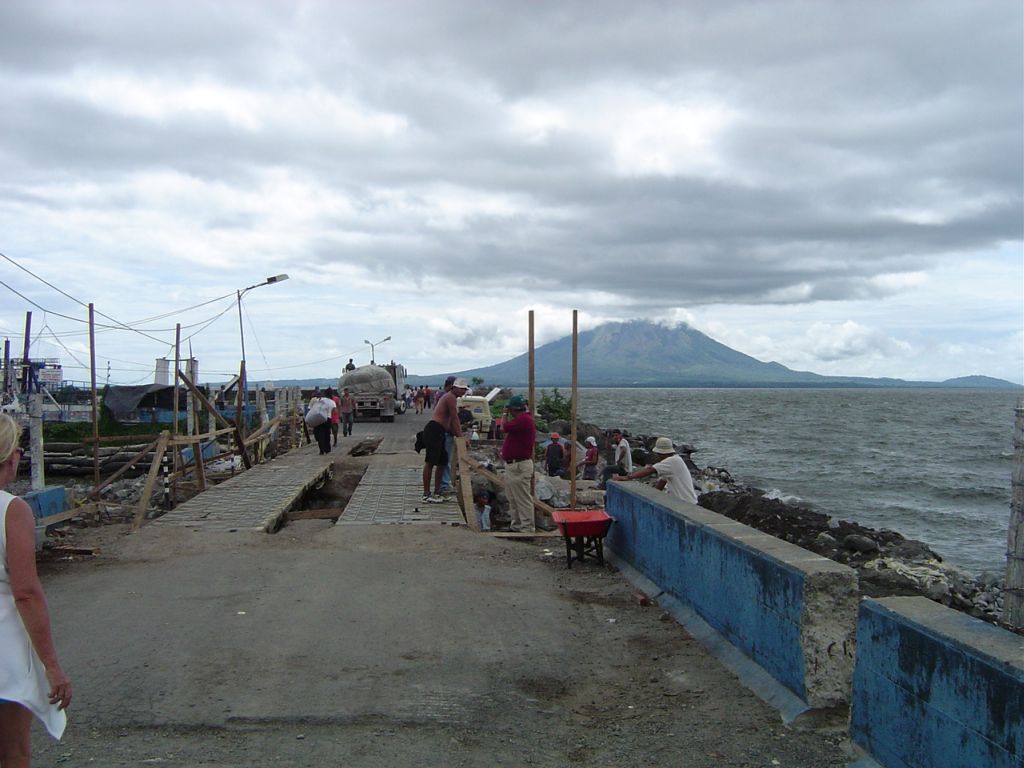
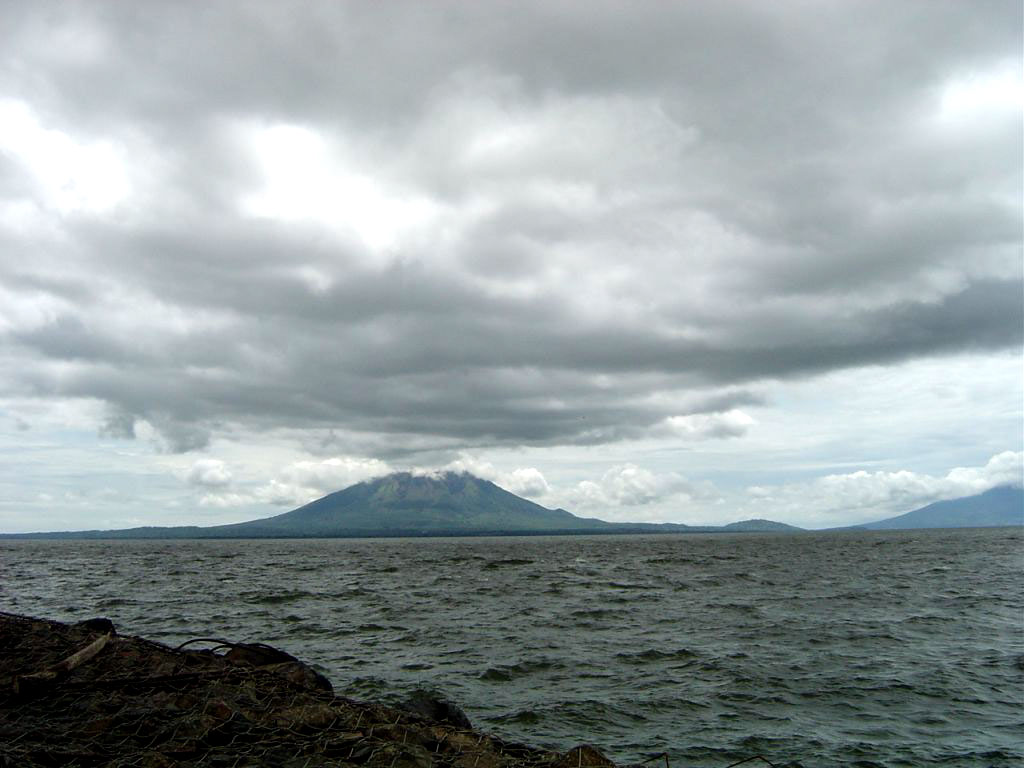
Lake Nicaragua or Cocibolca is the largest lake in Central America
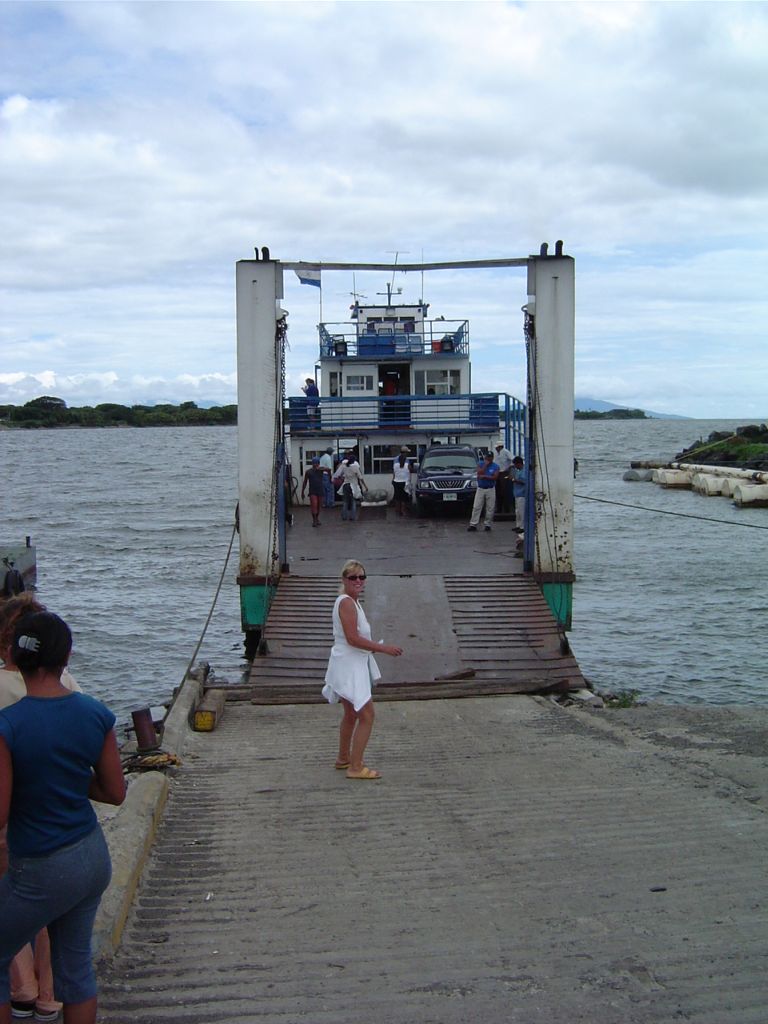
Ferry to Ometepe Island
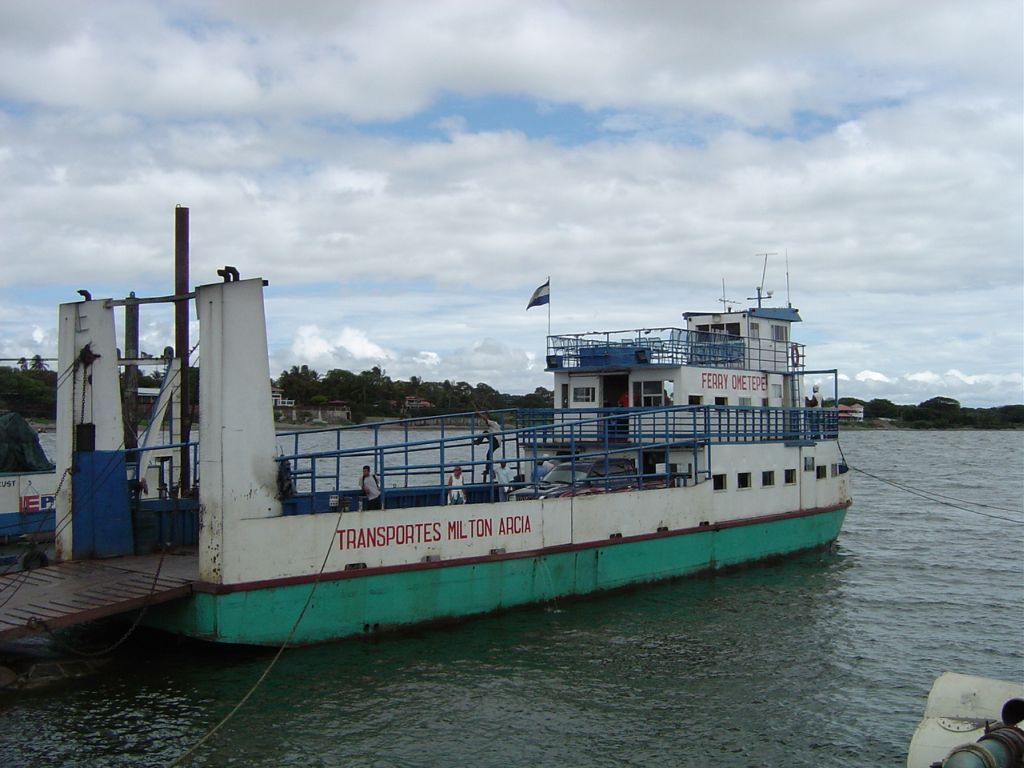
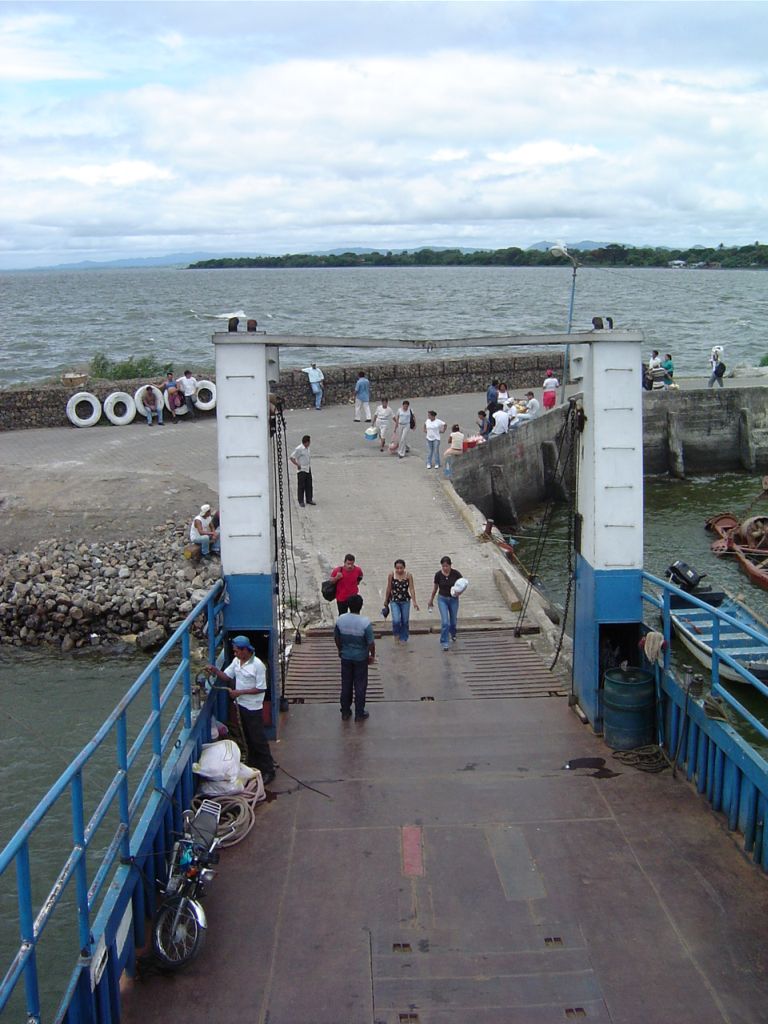
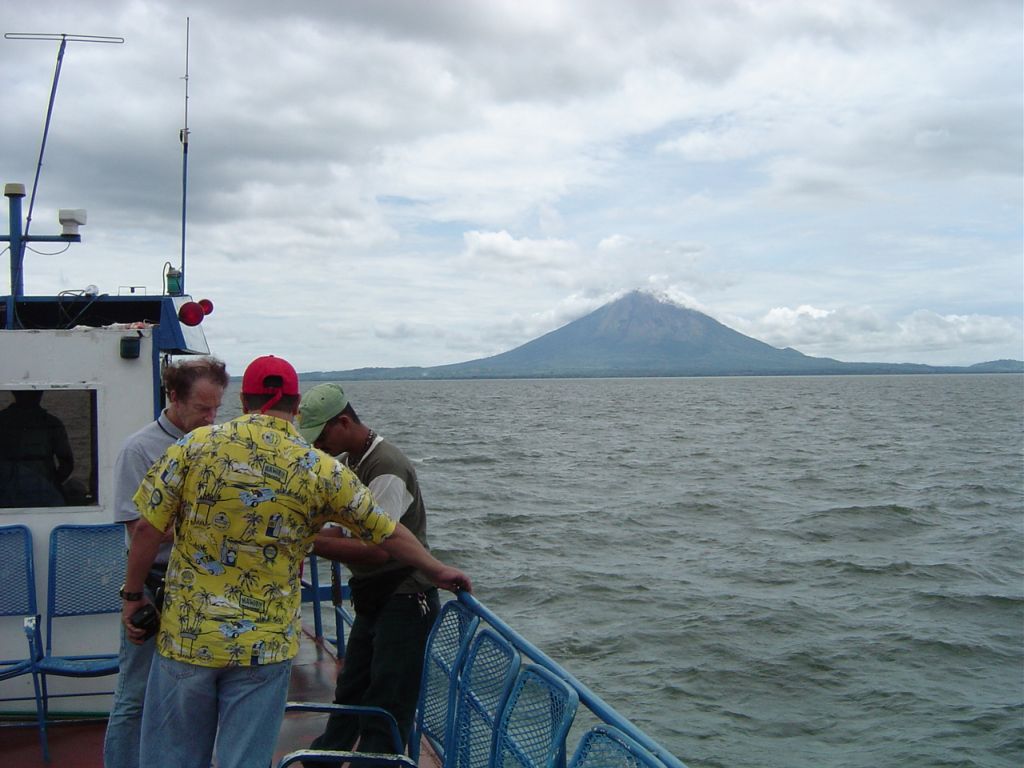
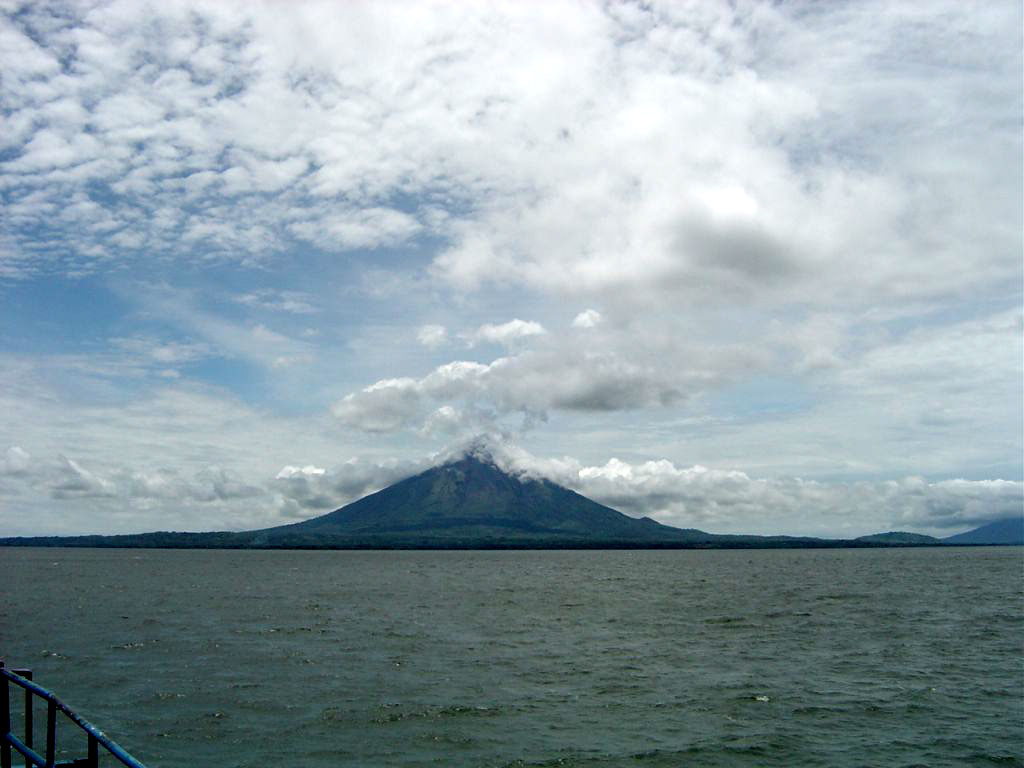
Active Volcano Concepción, one of two volcanos on Ometepe Island
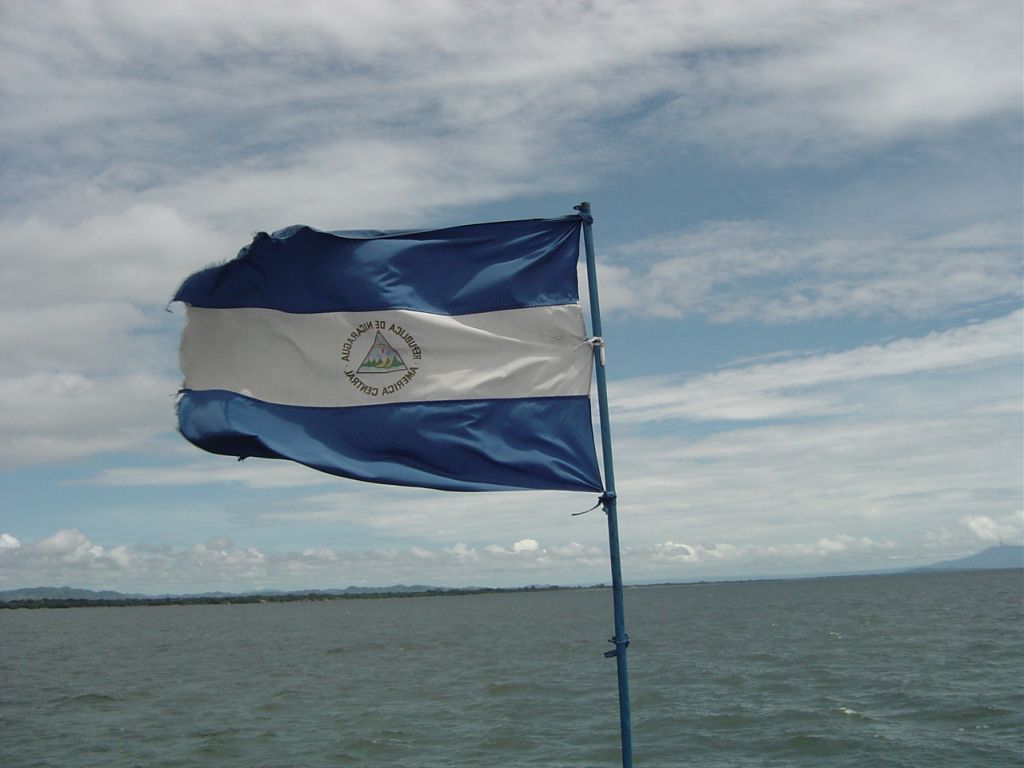
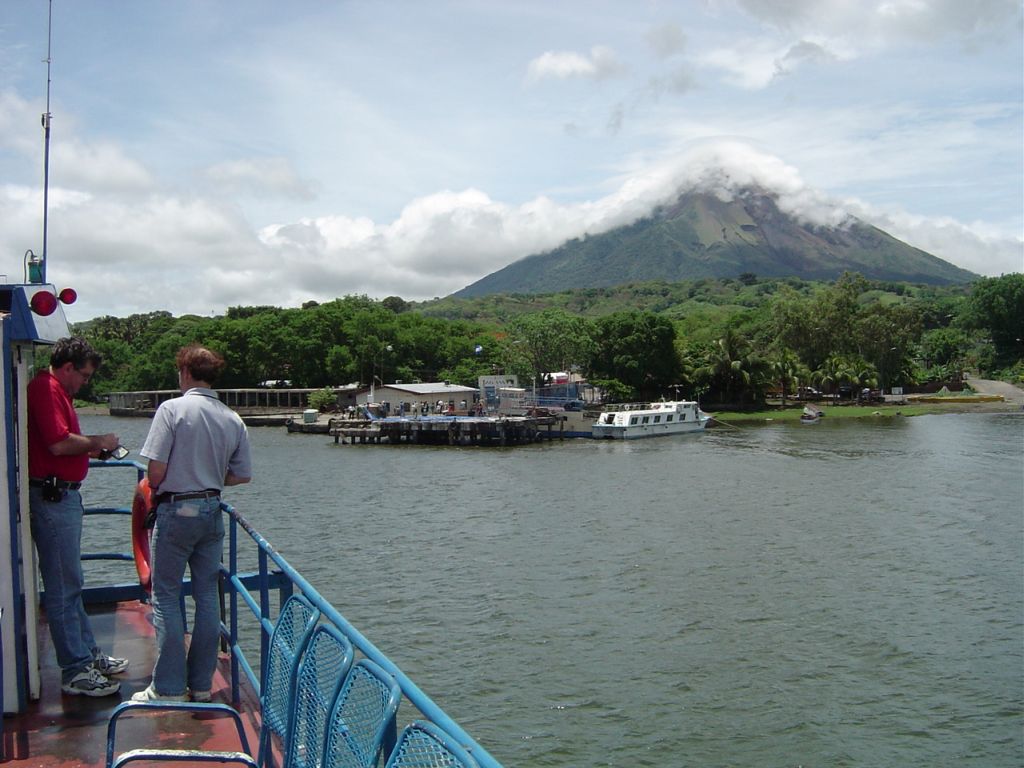
Preparing to dock at Moyogalpa
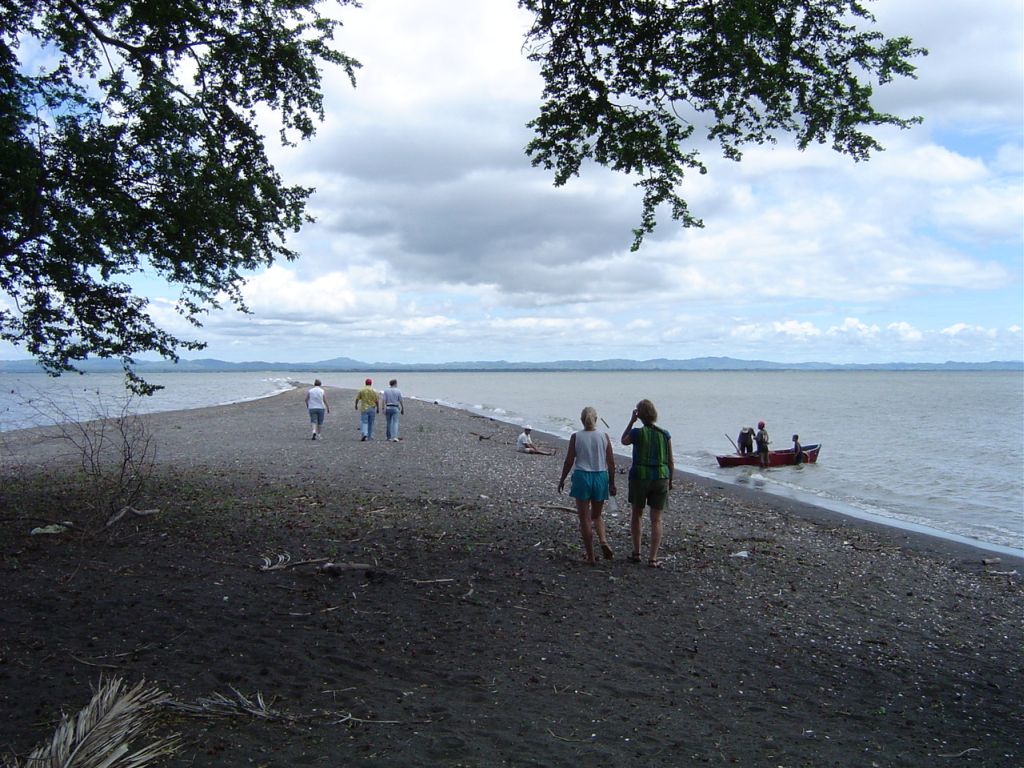
Punta Jesus Maria, a narrow spit of sand formed by water currents and sediment build up.
At certain times of the year, the sandbank extends more than a kilometer
